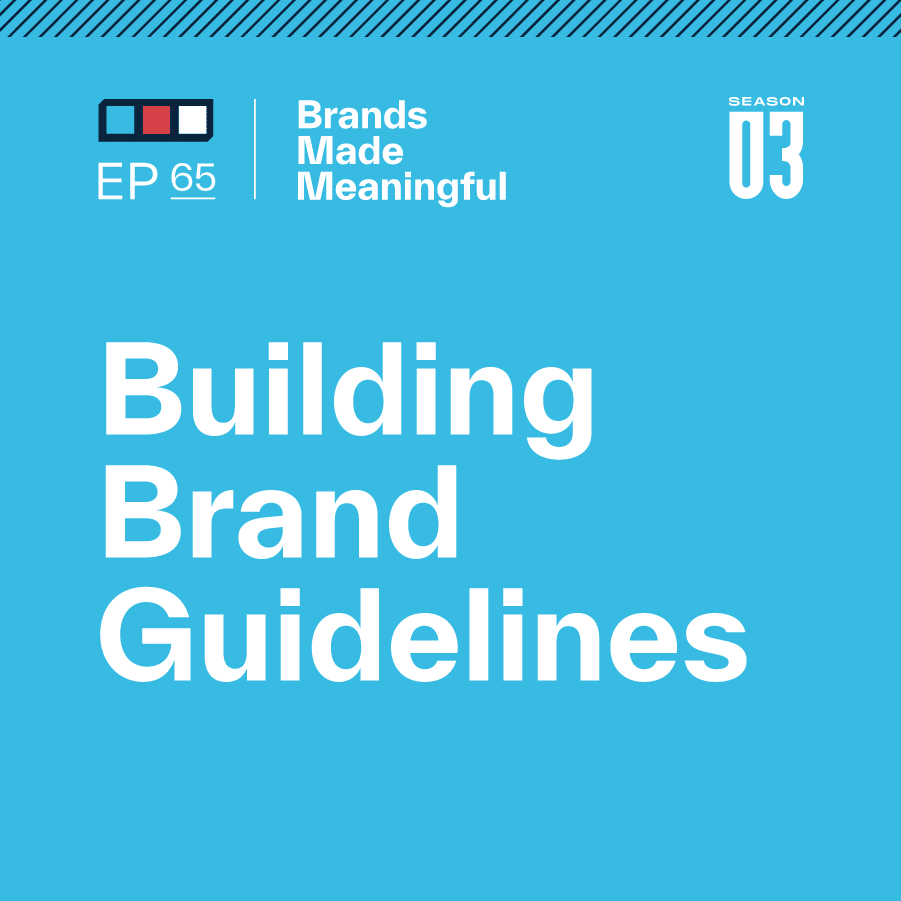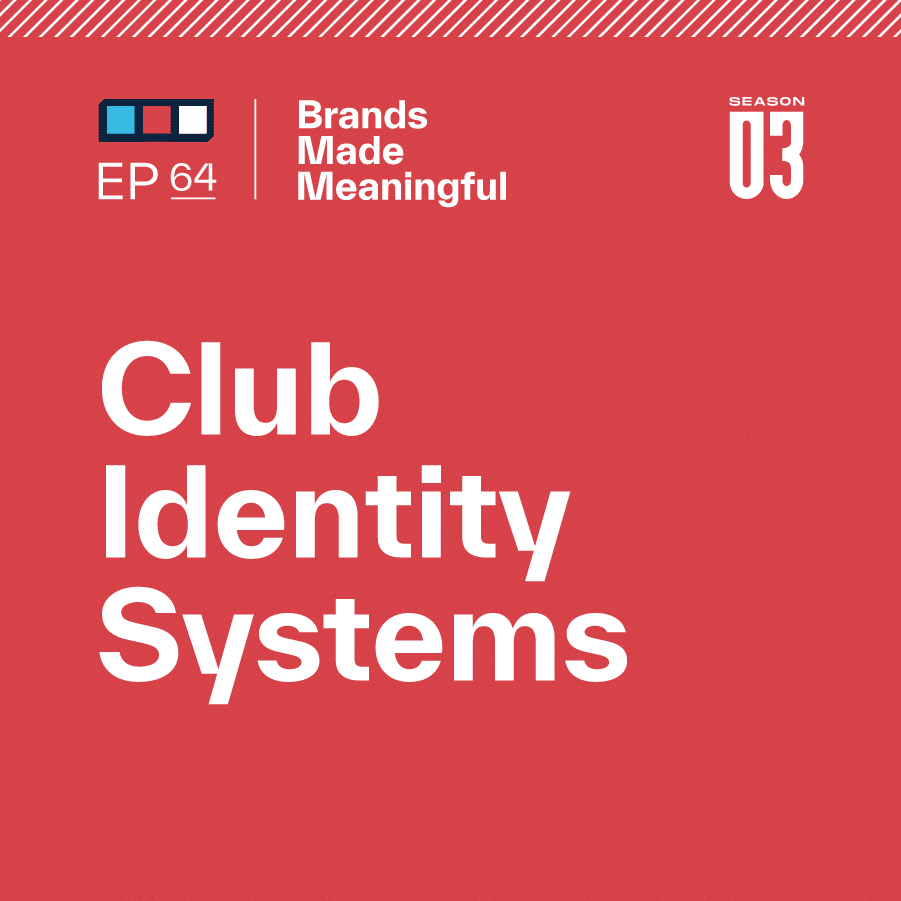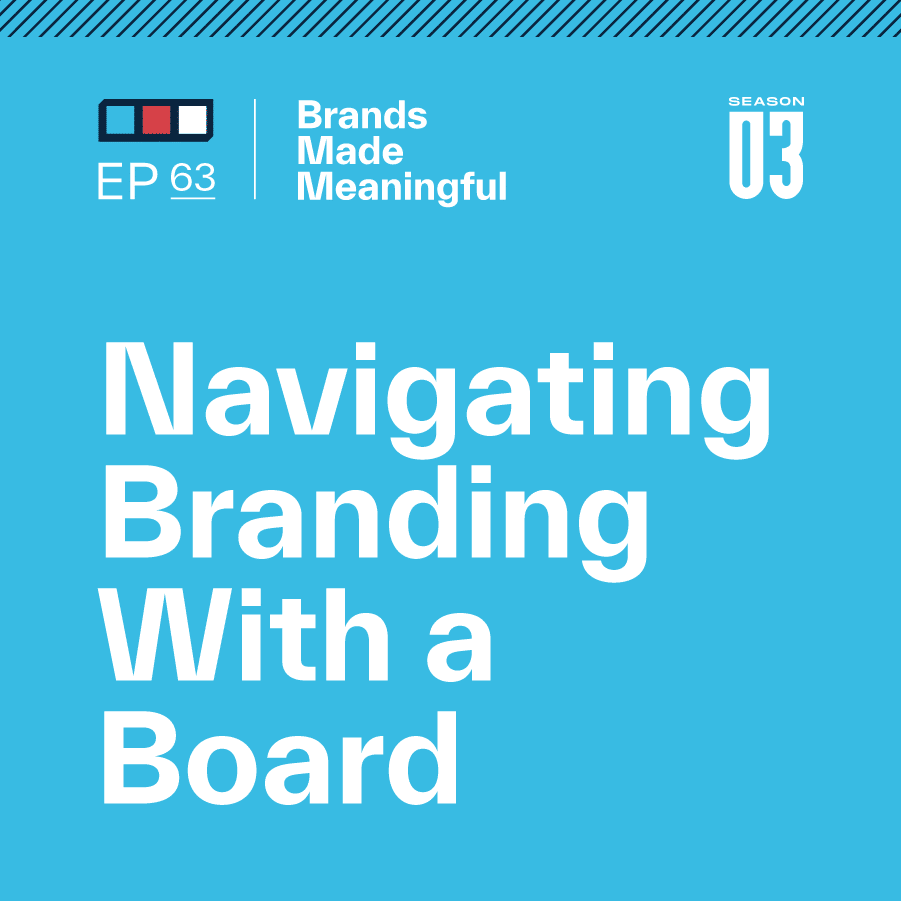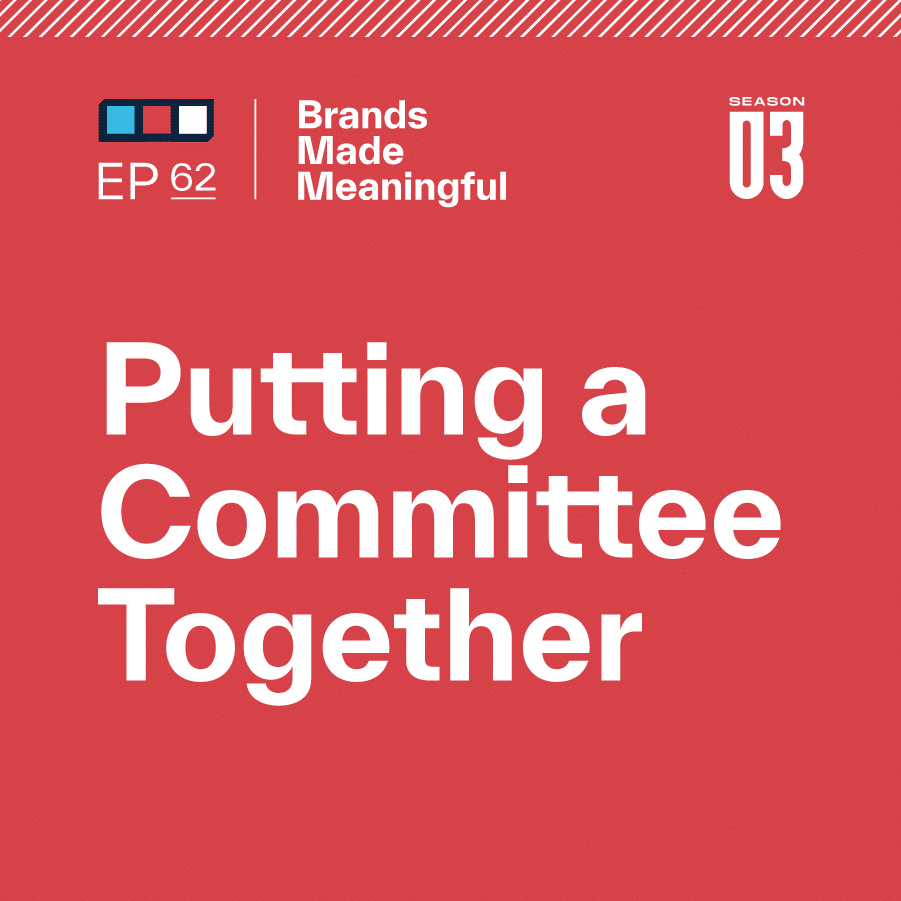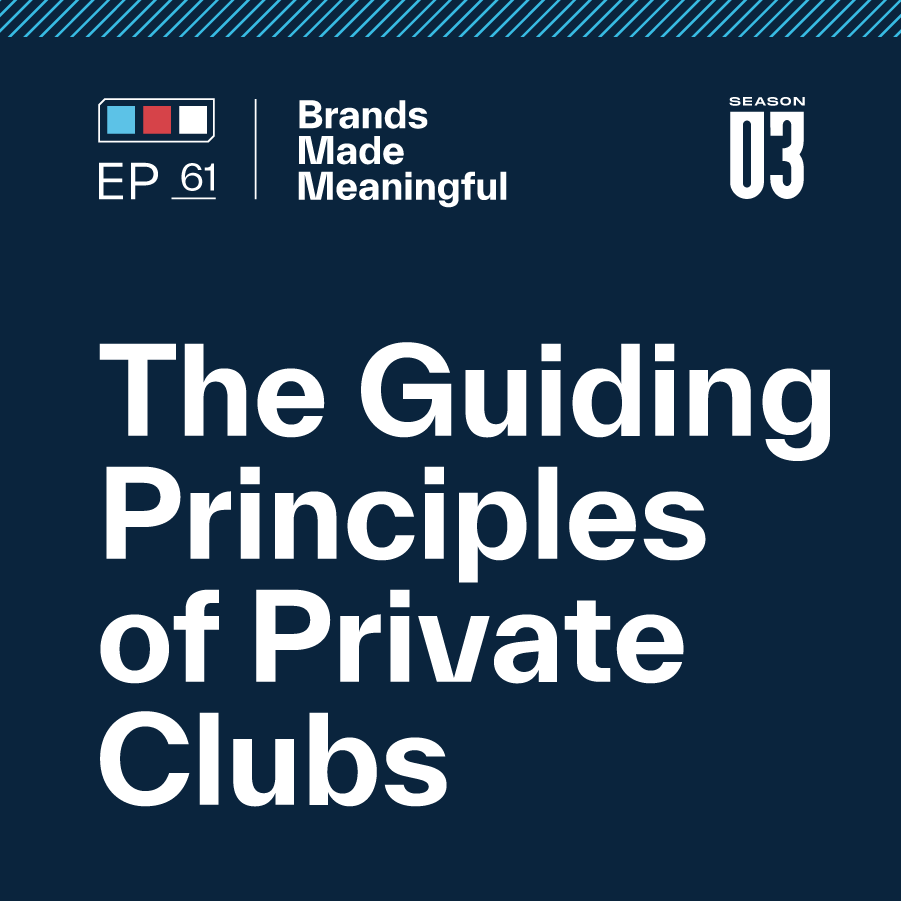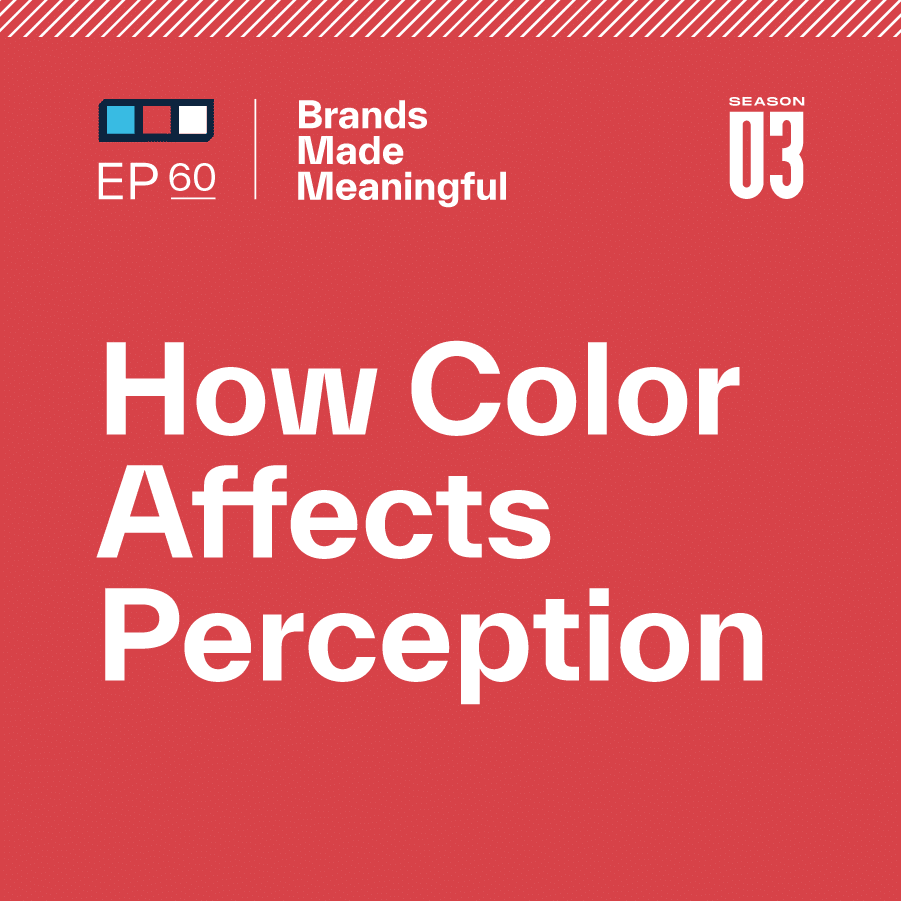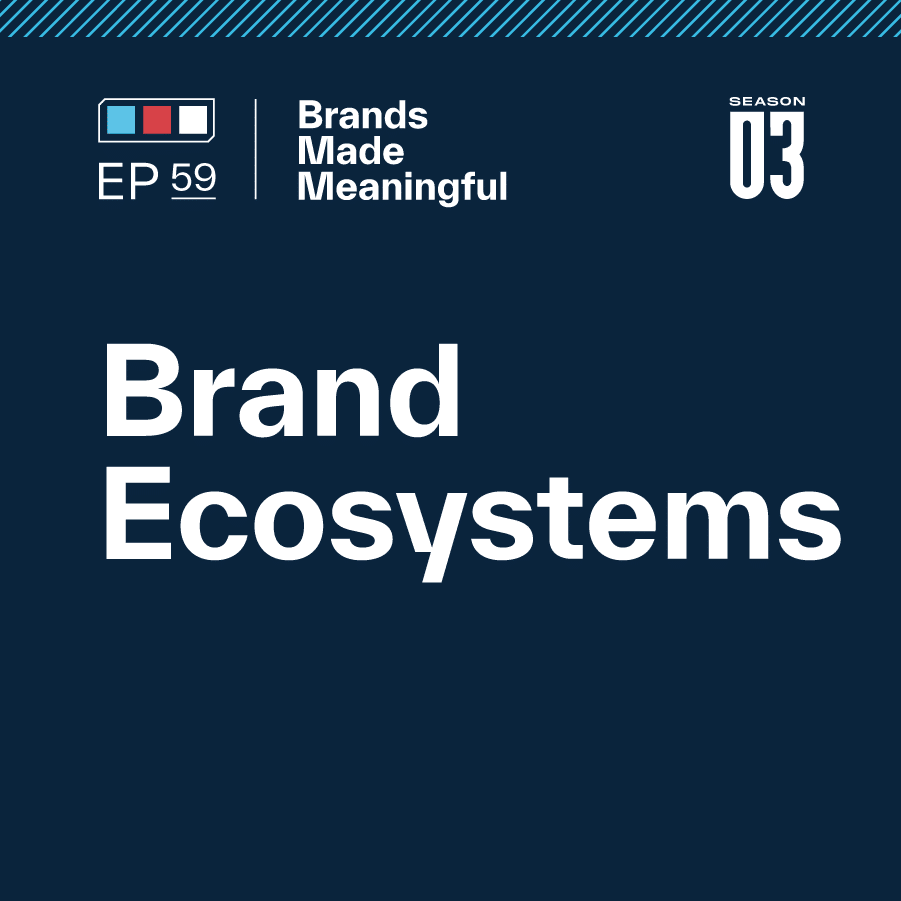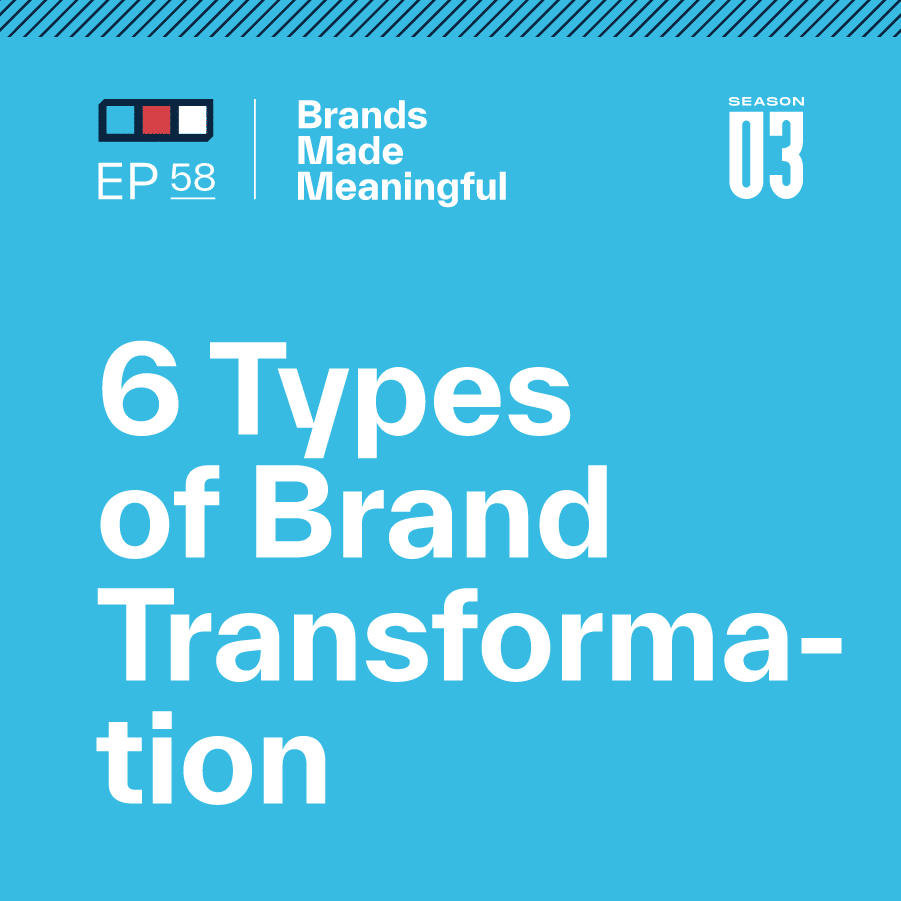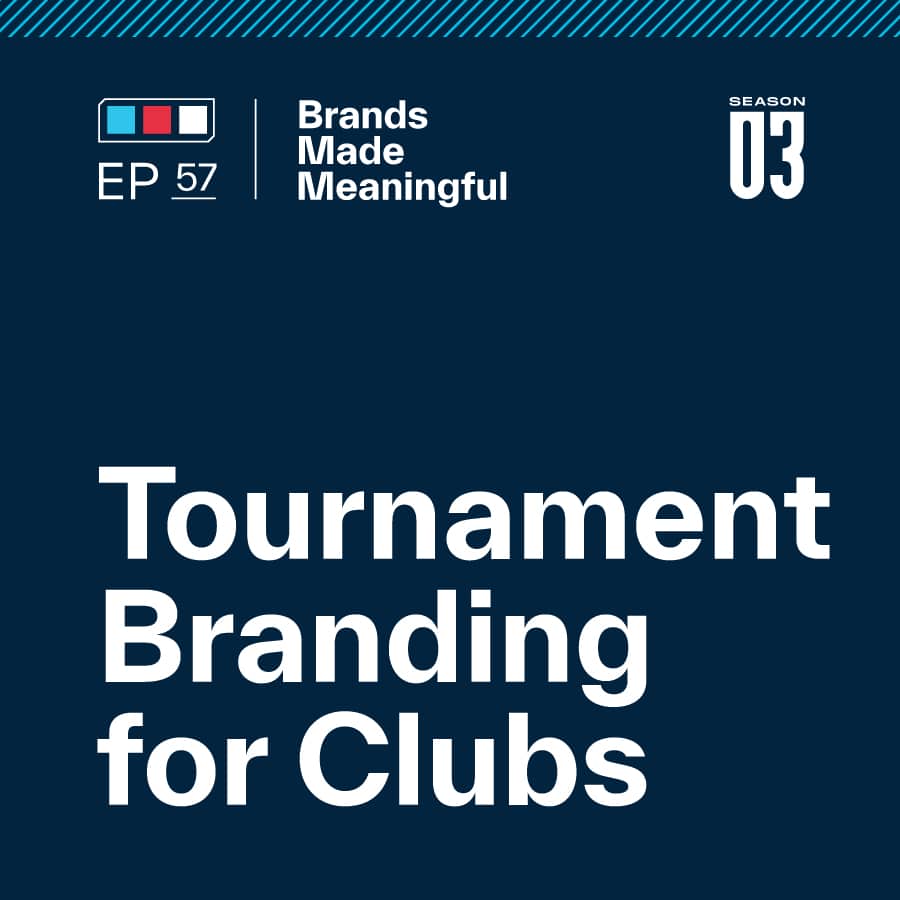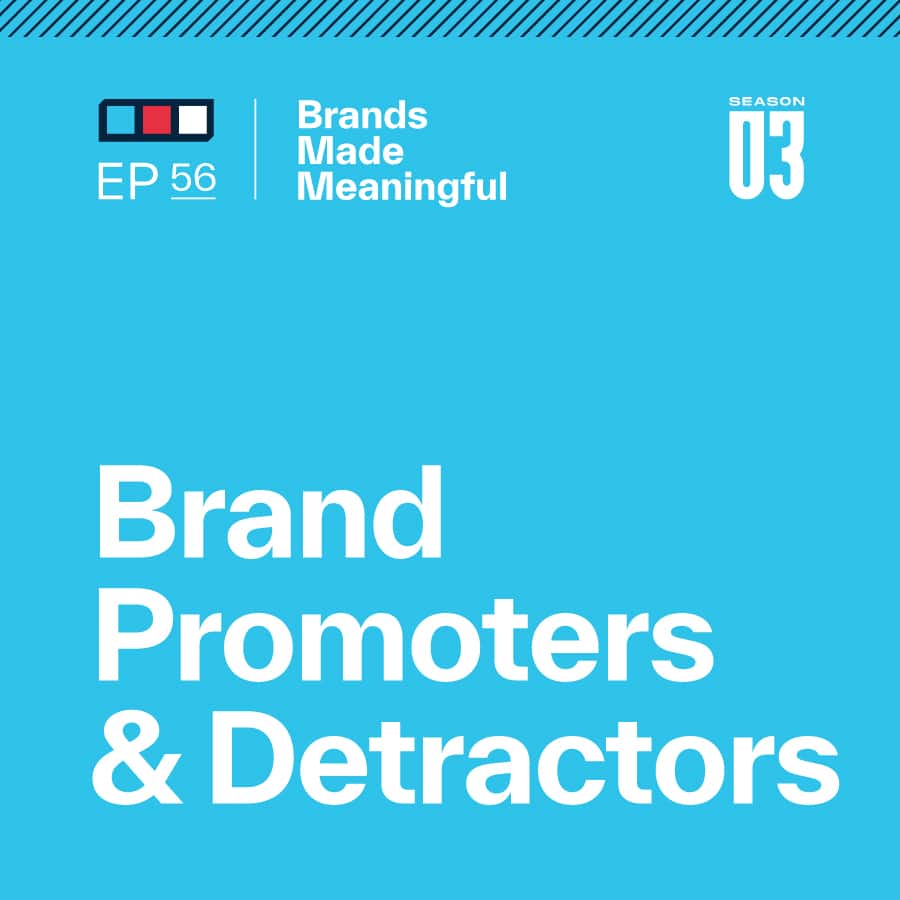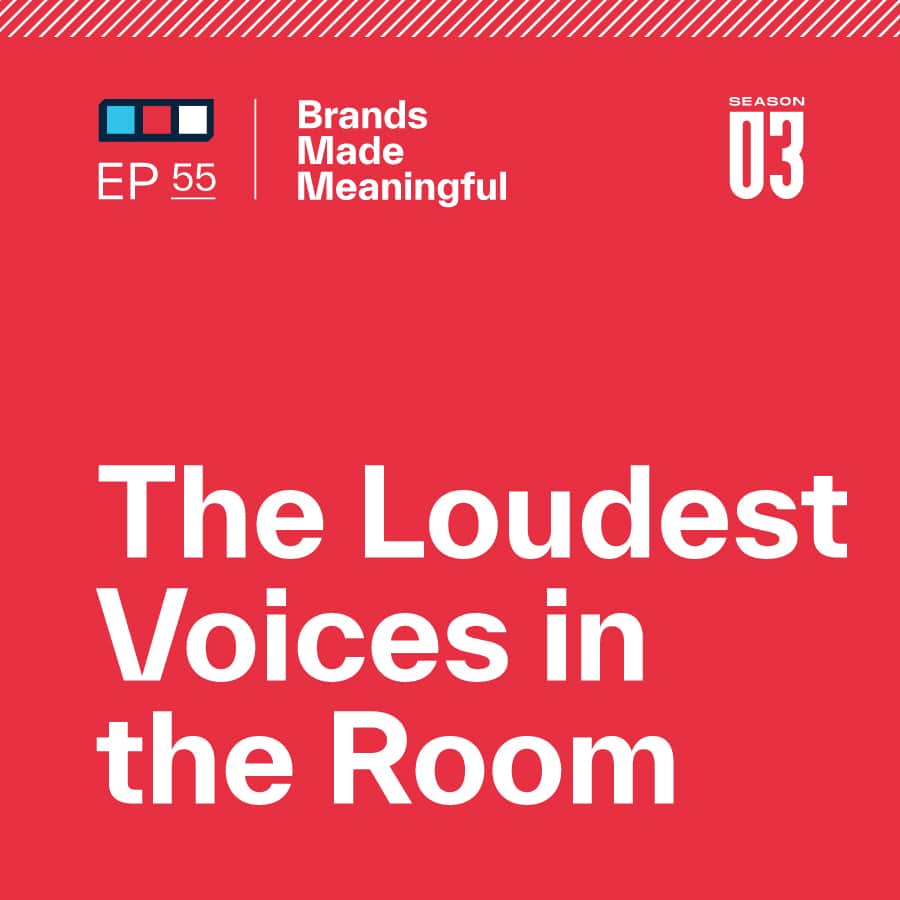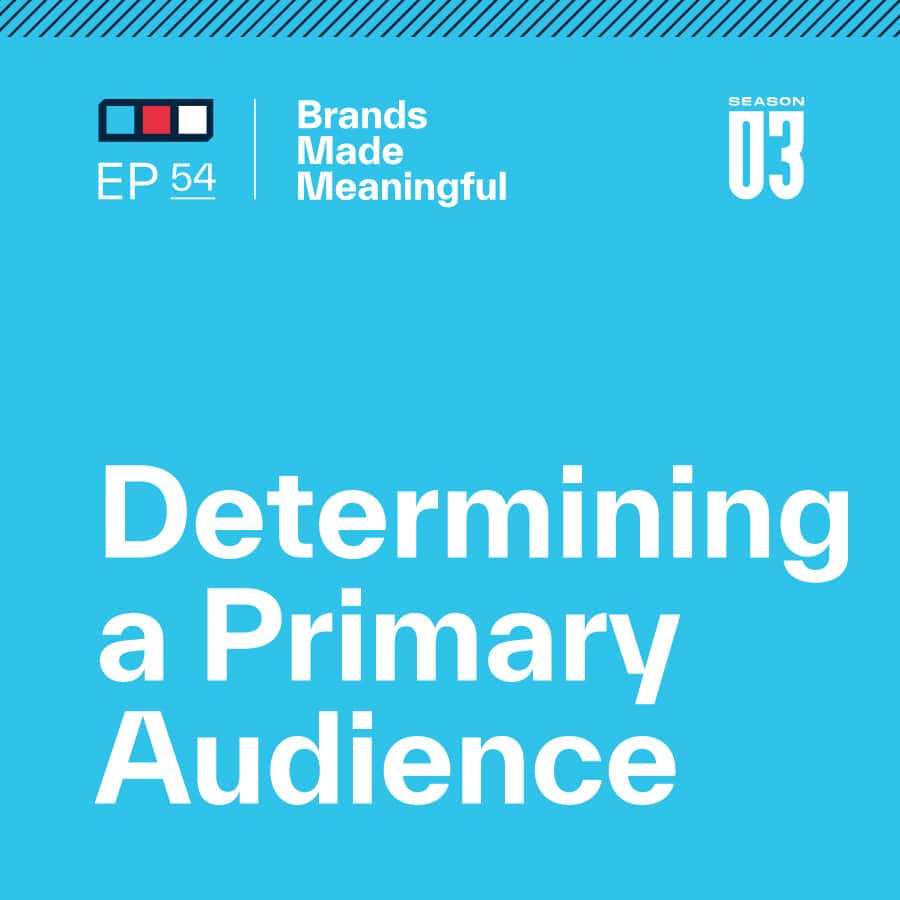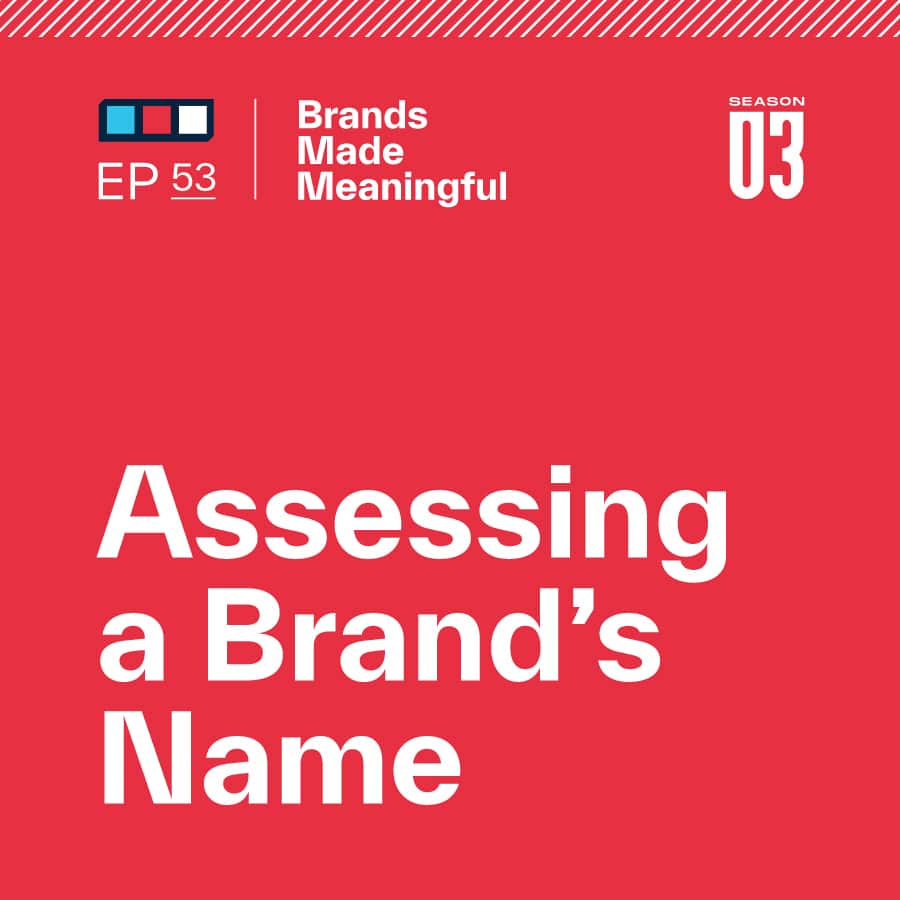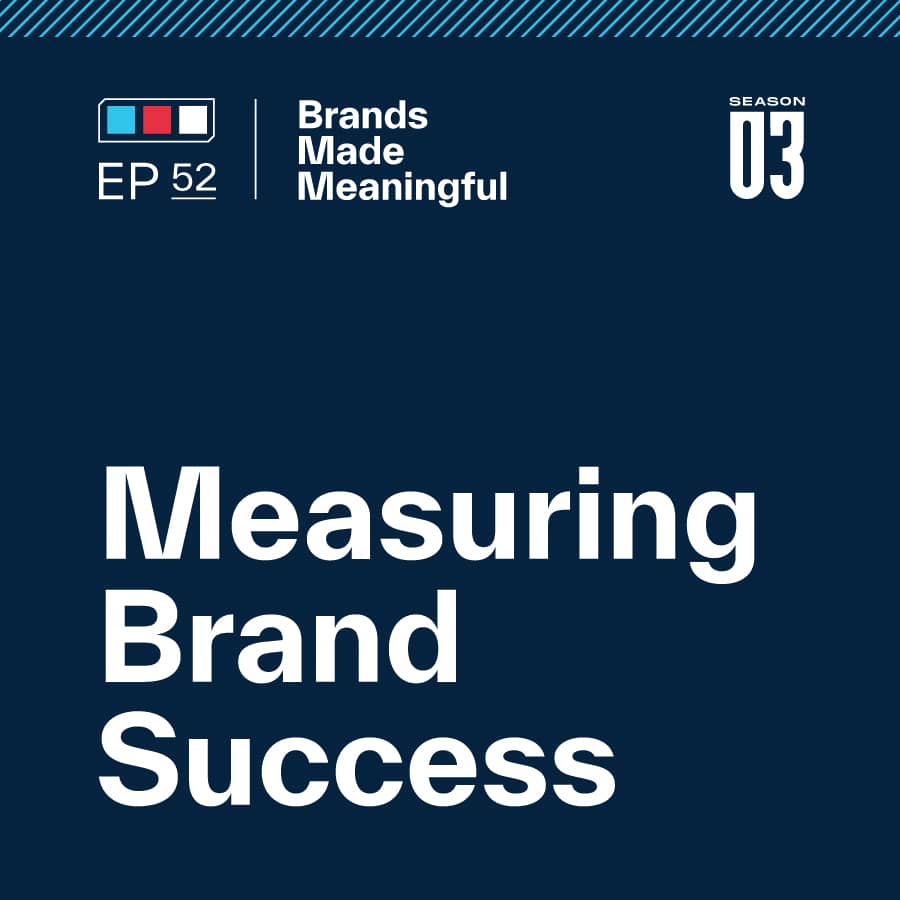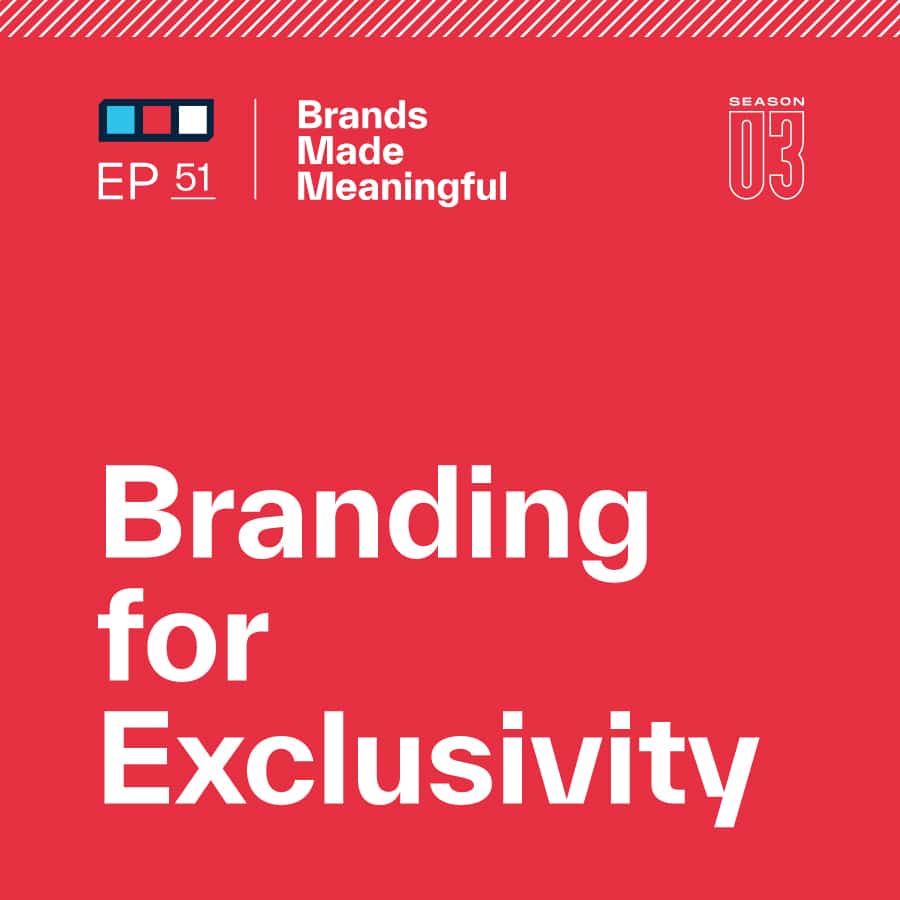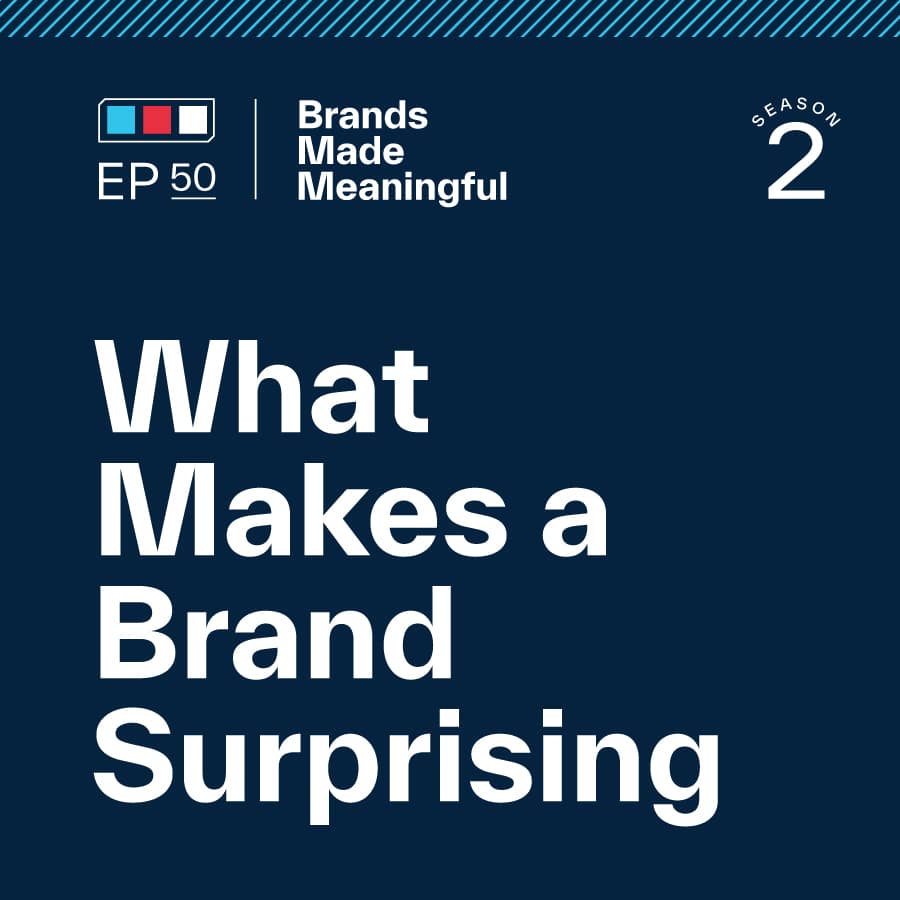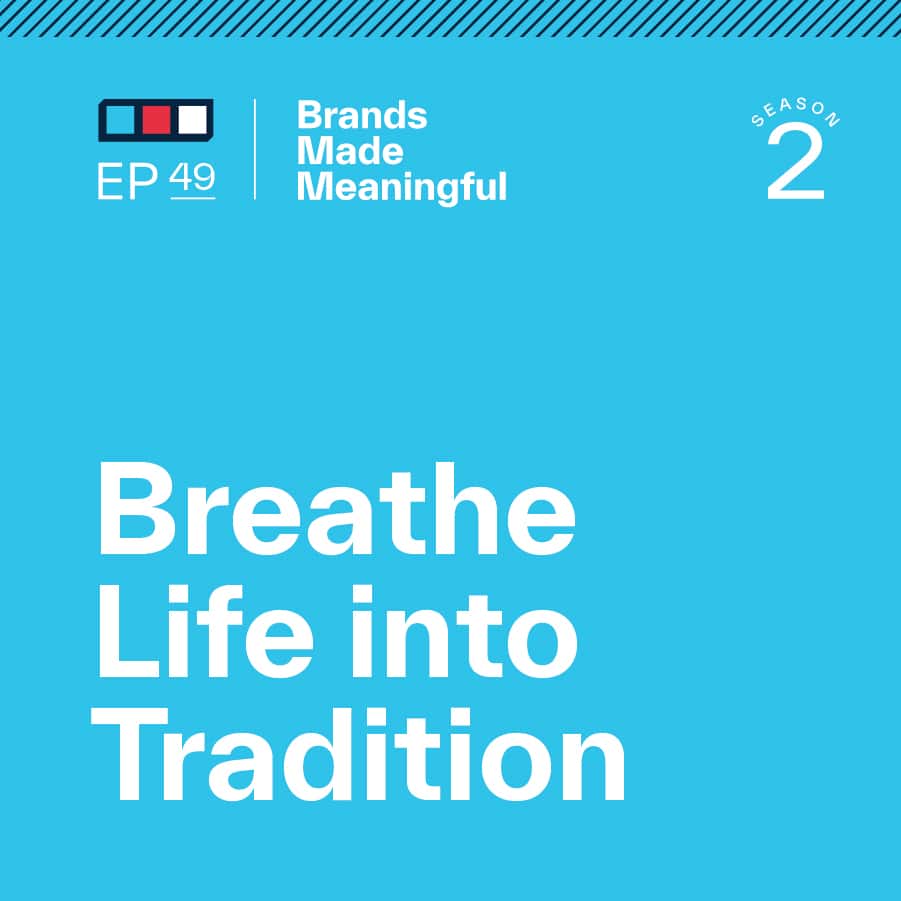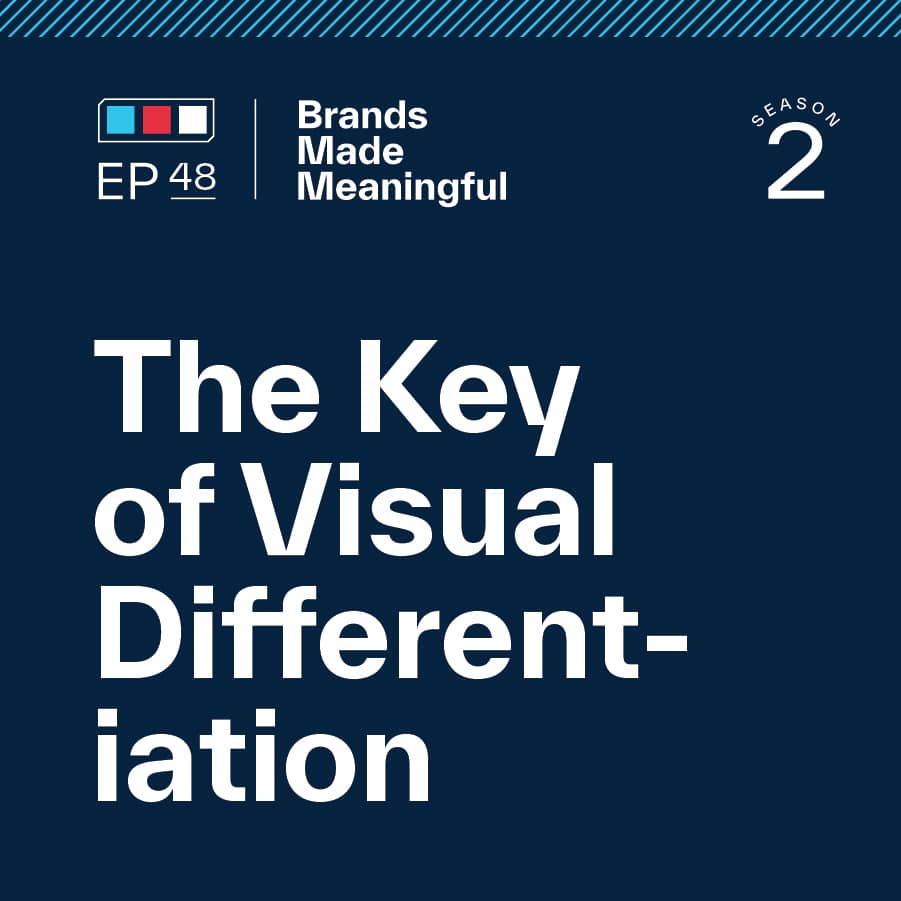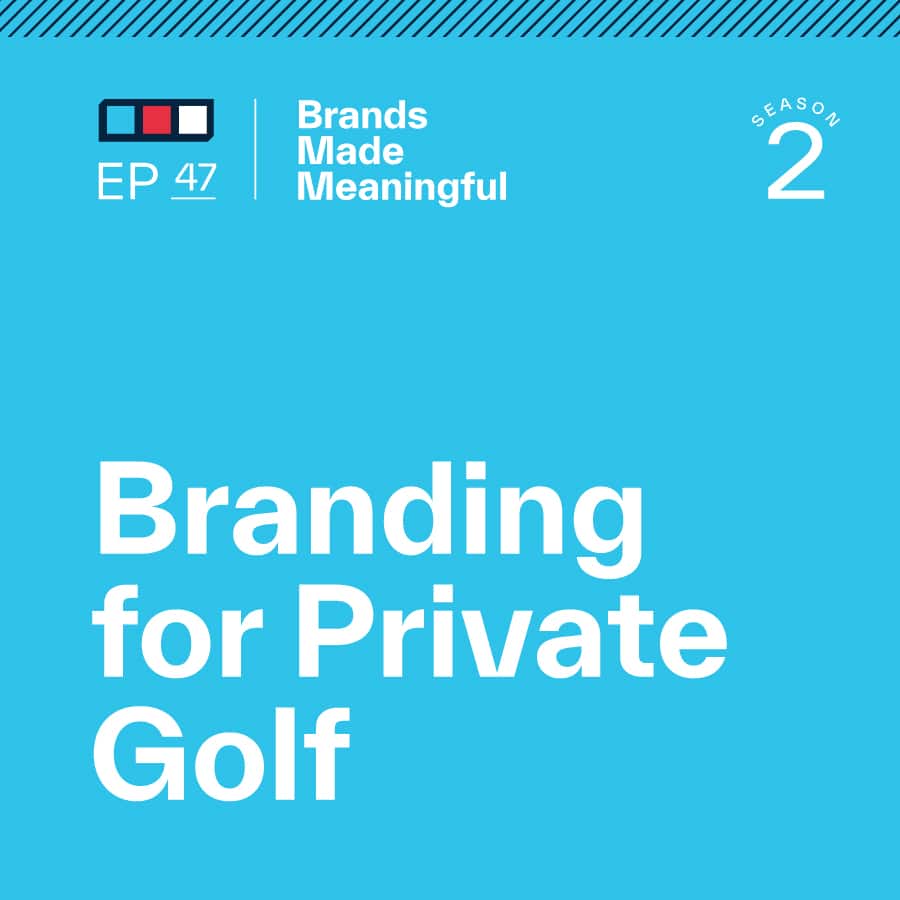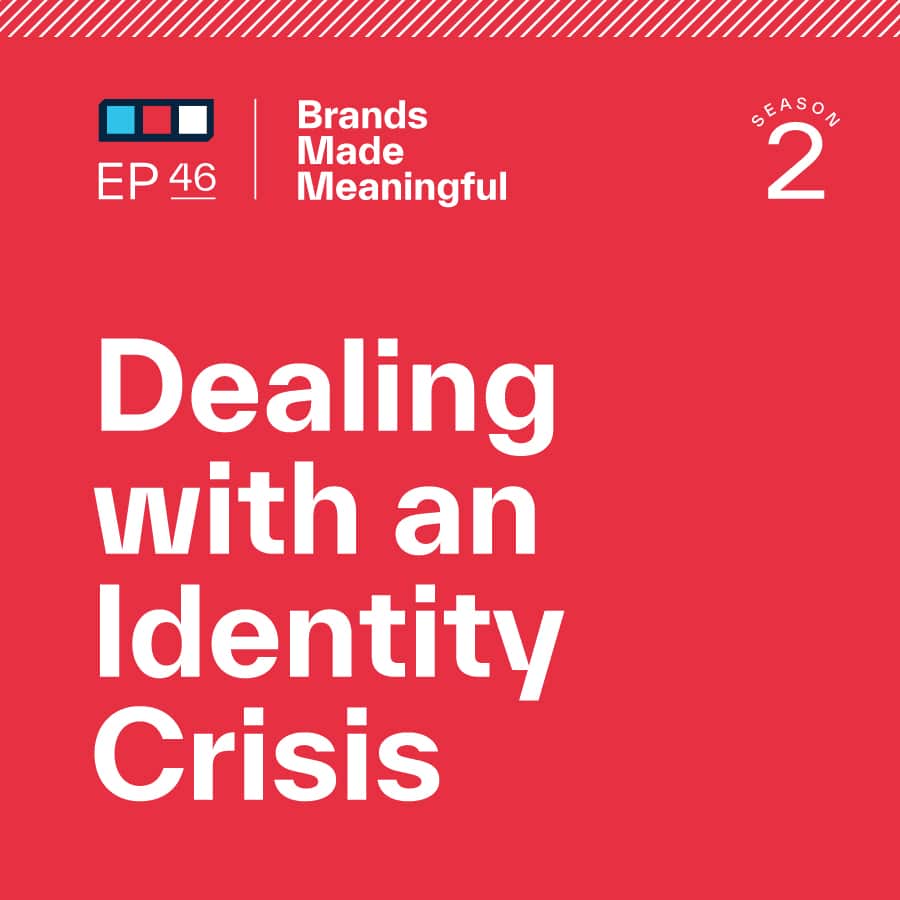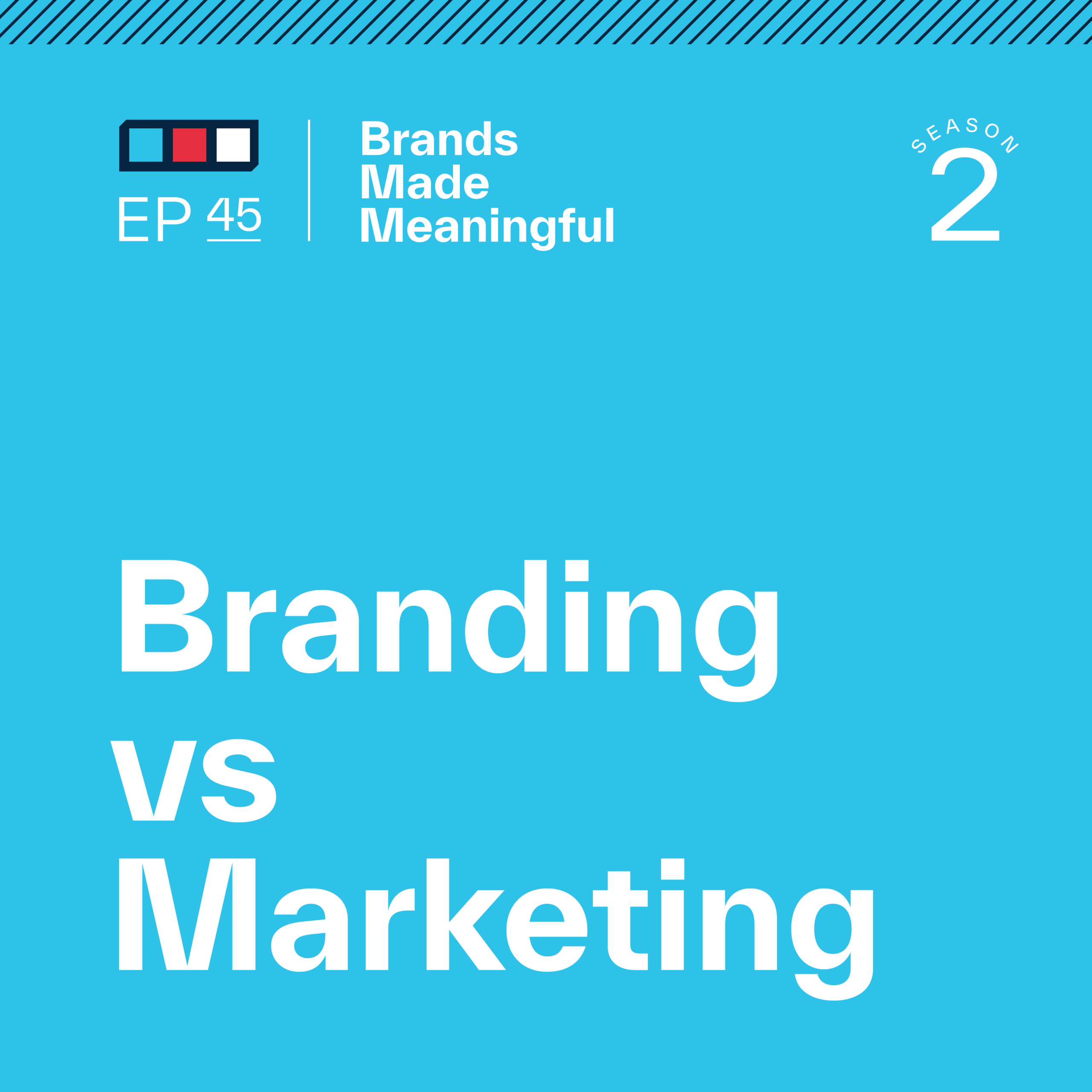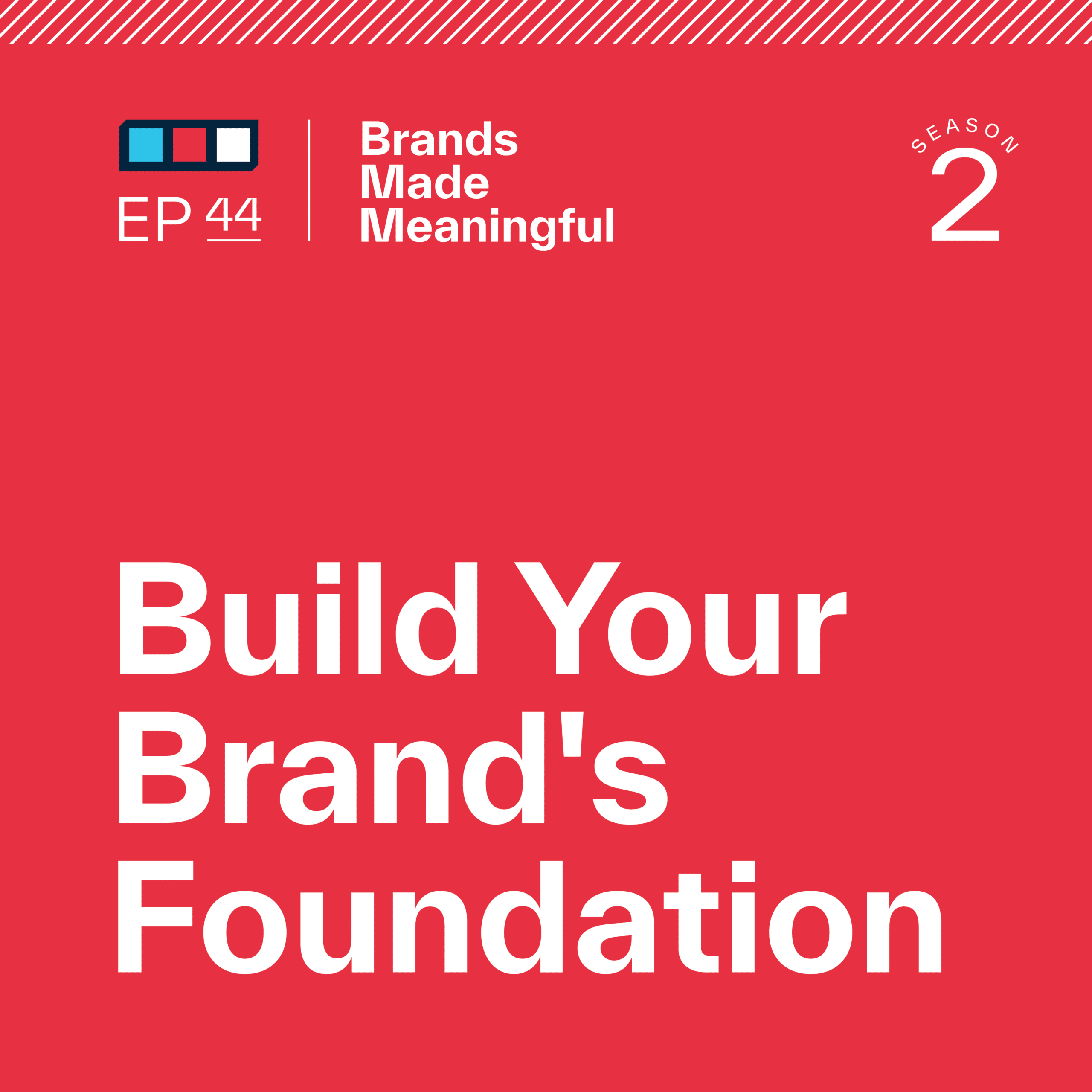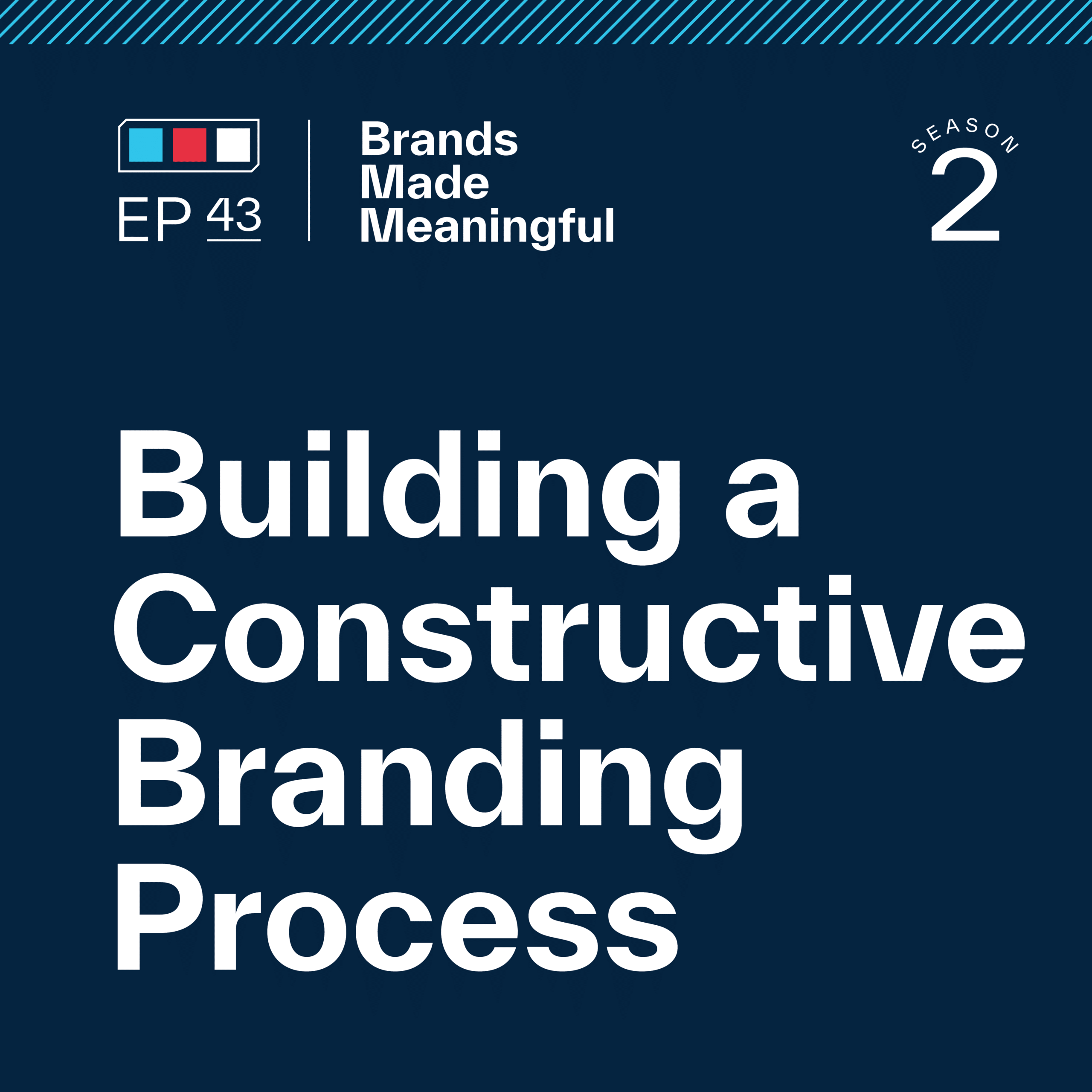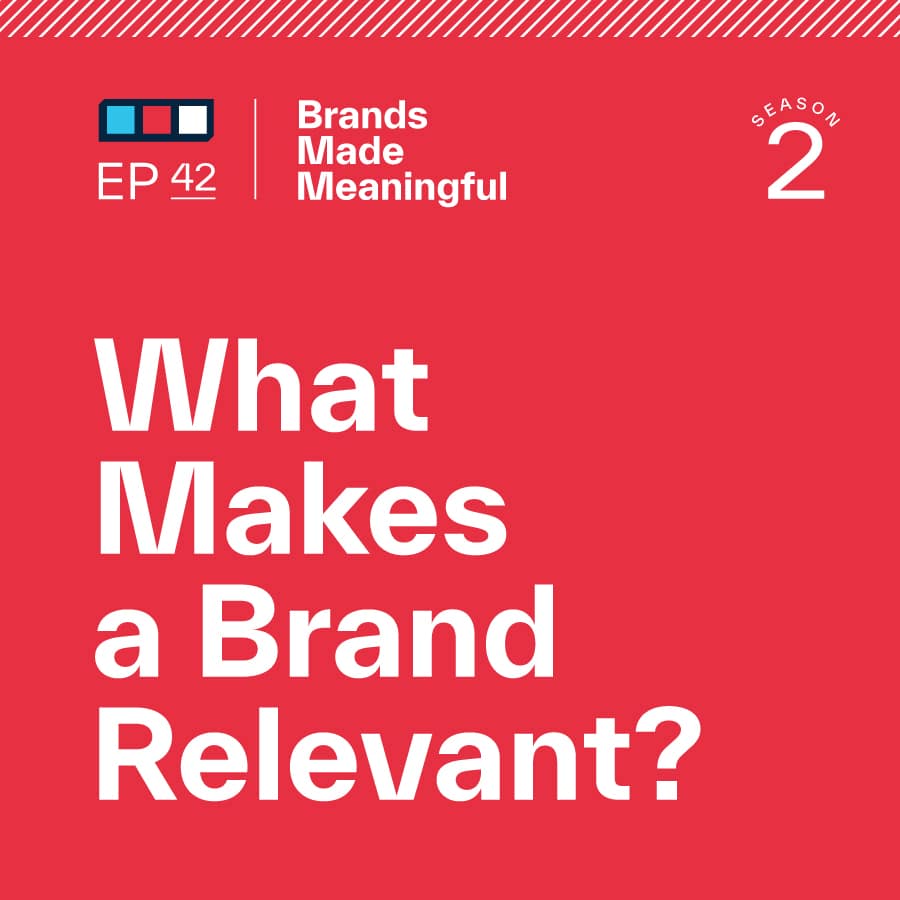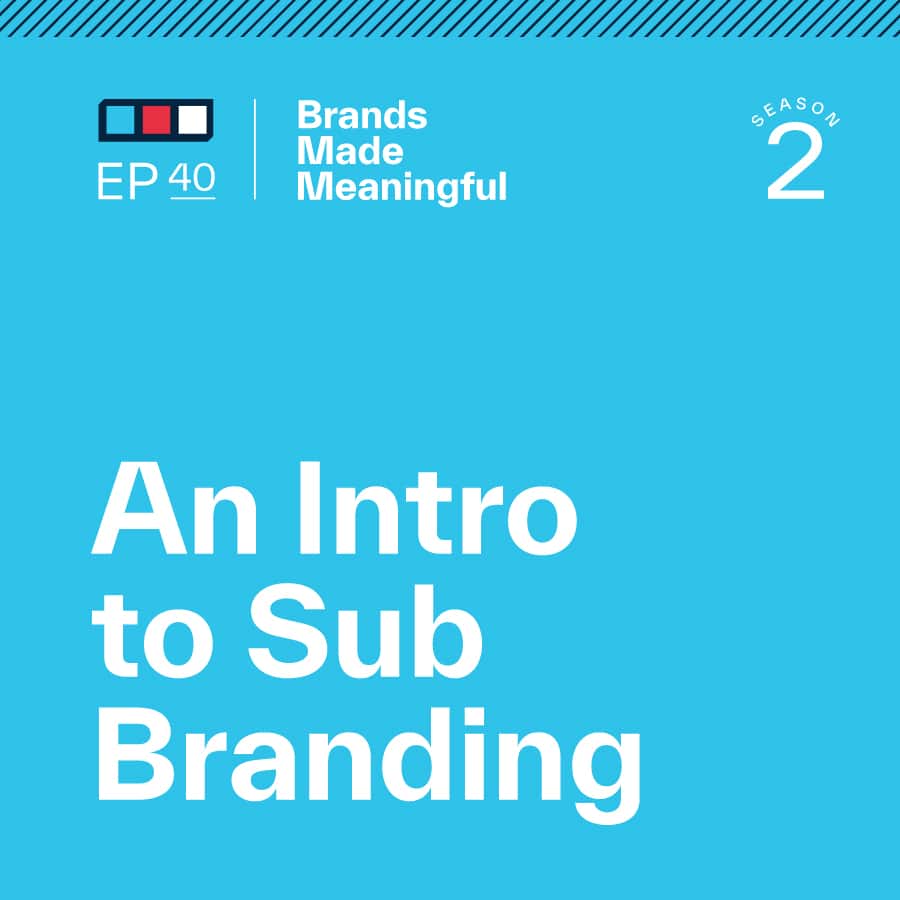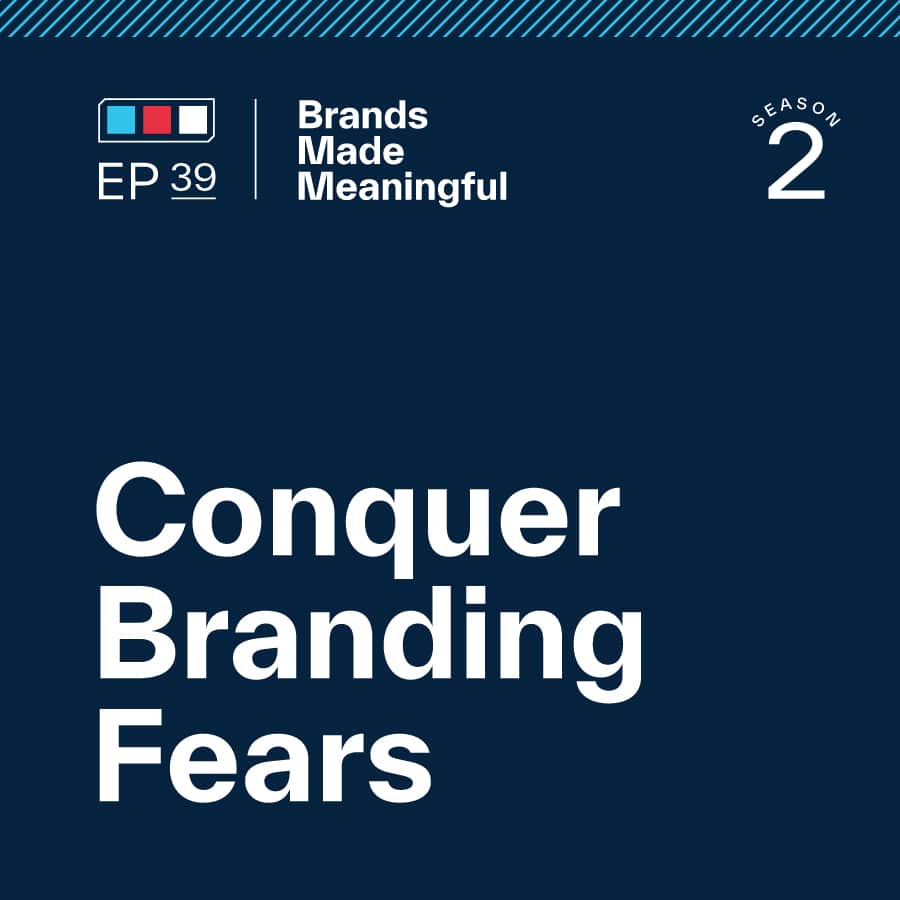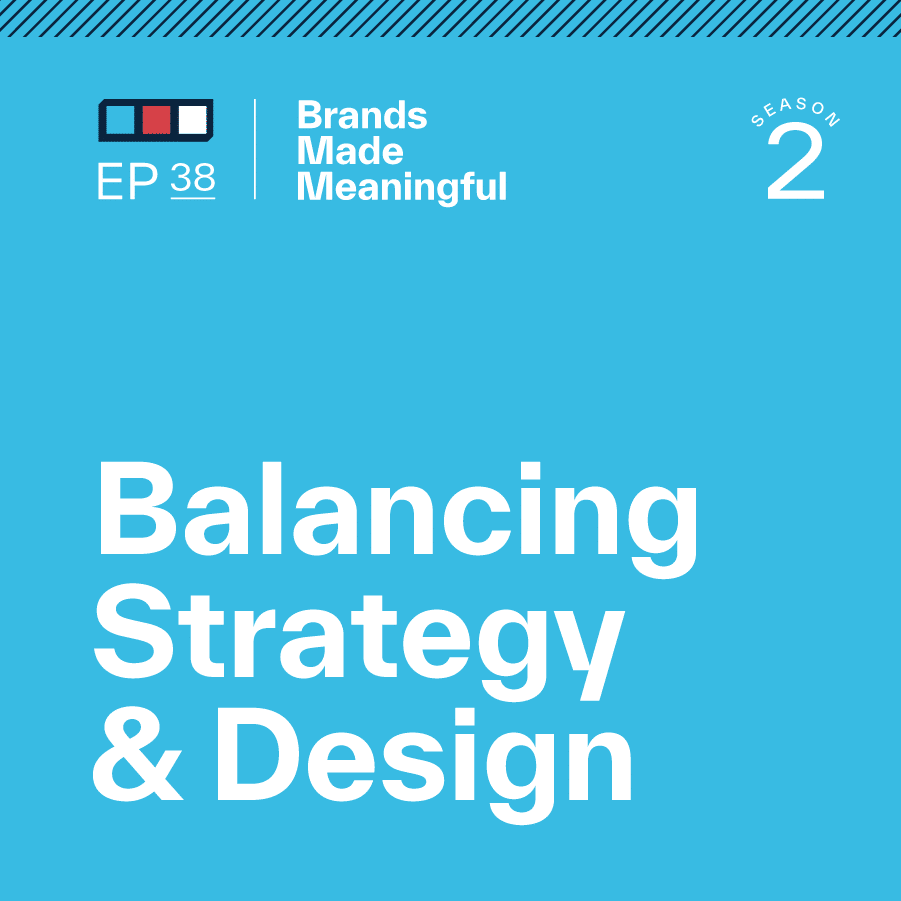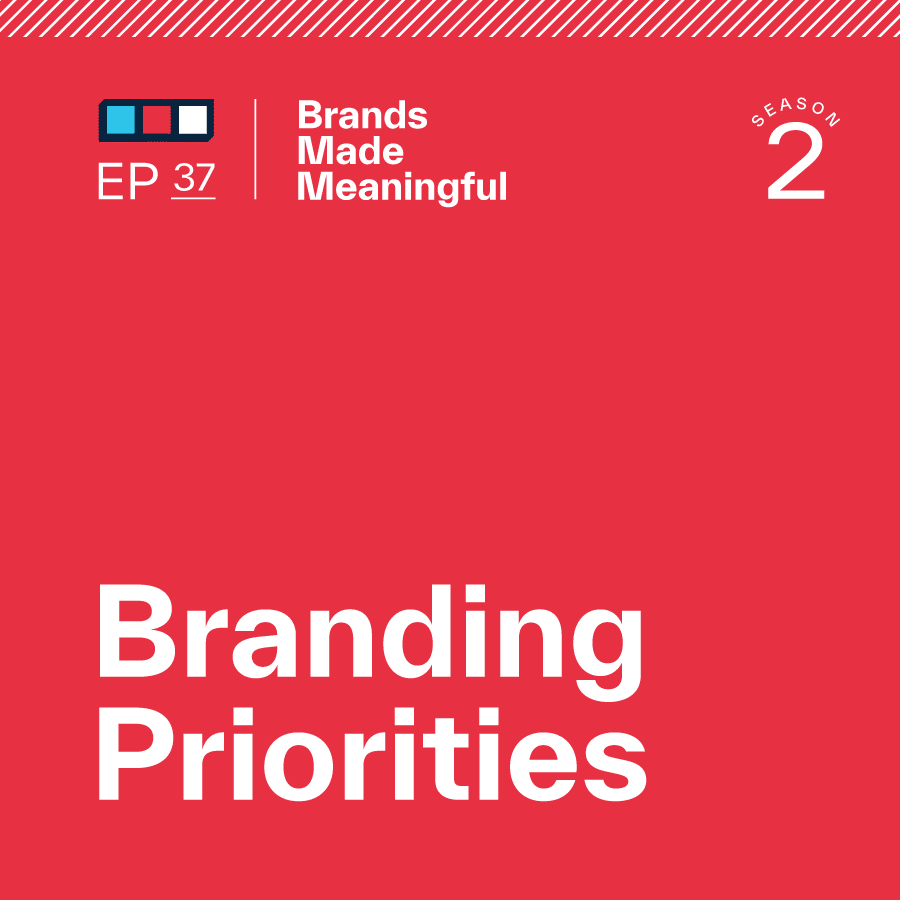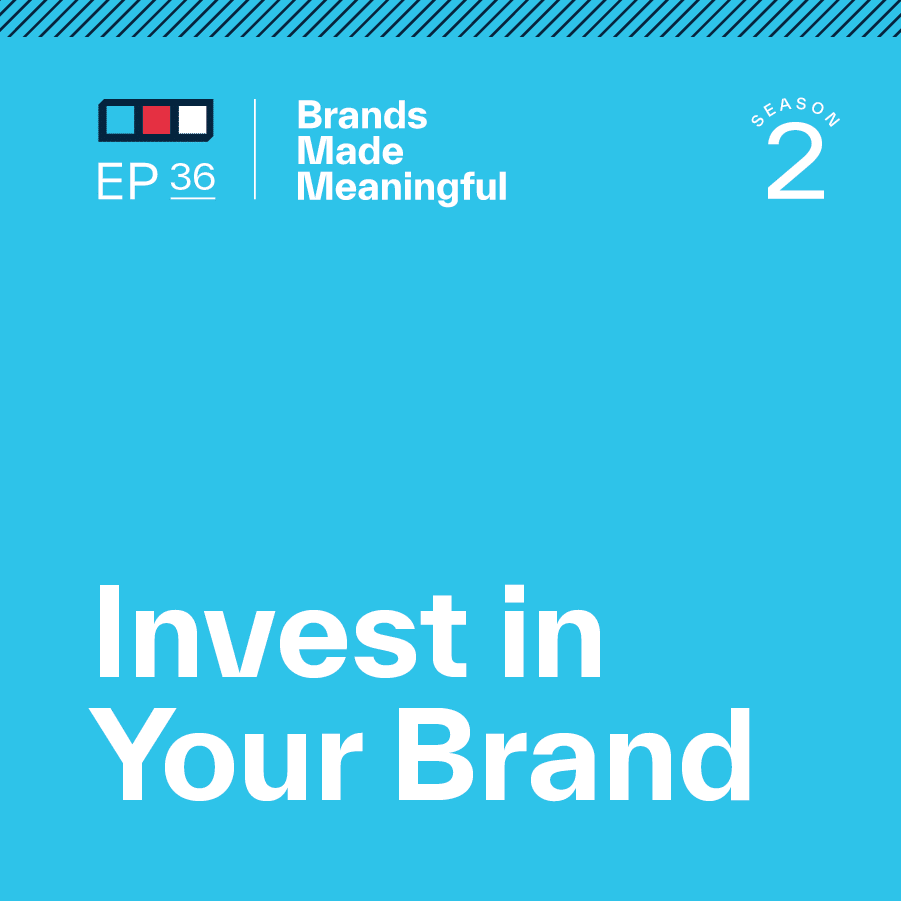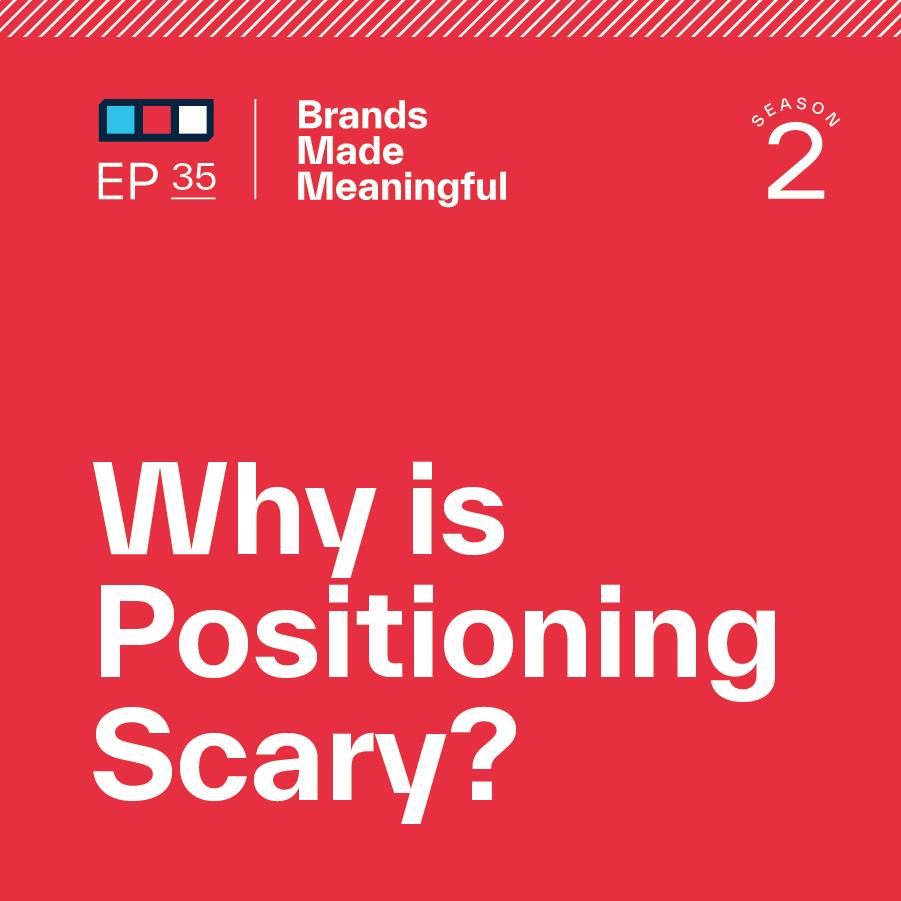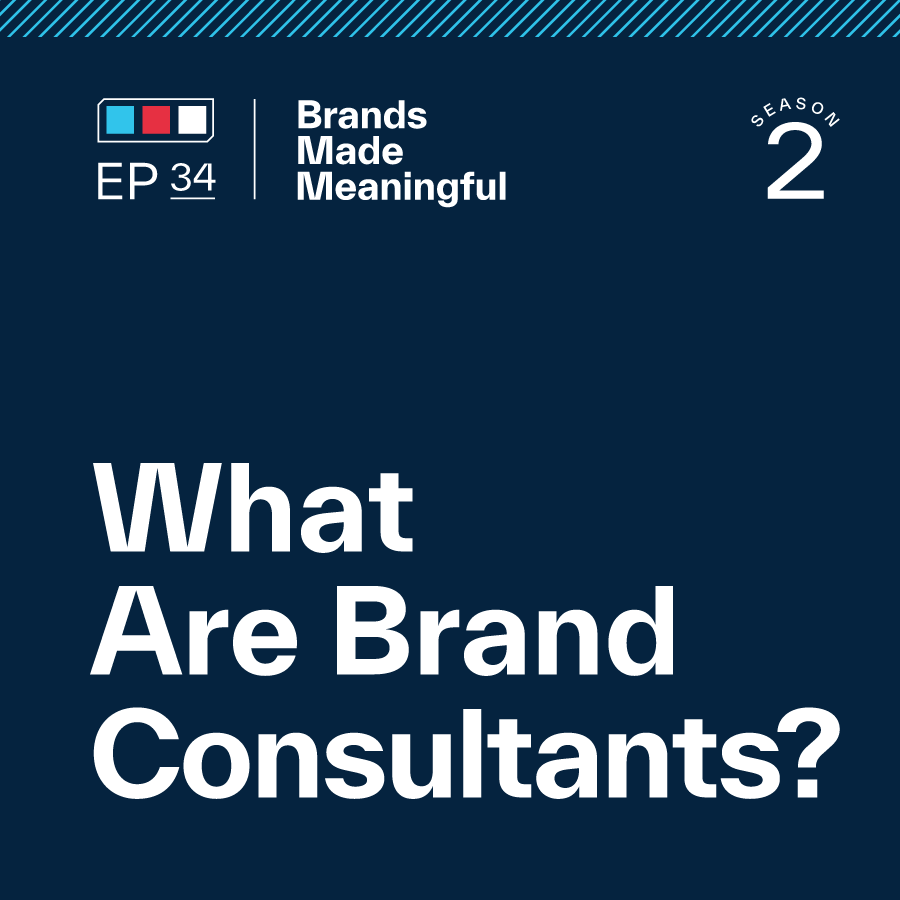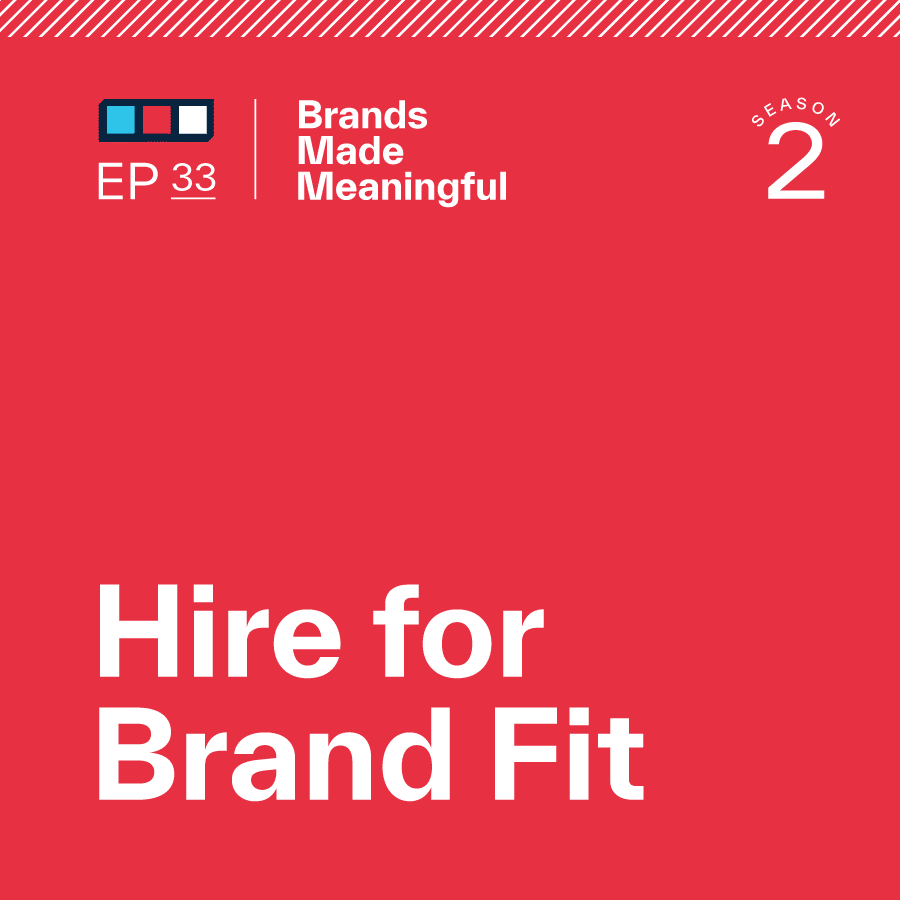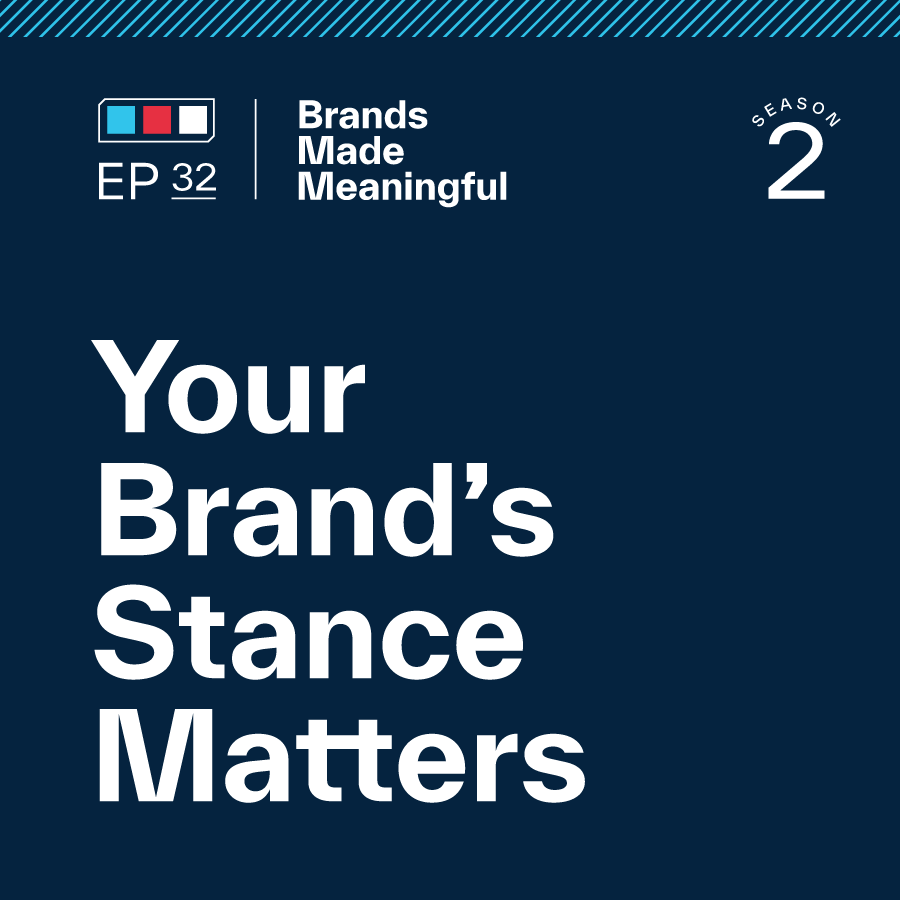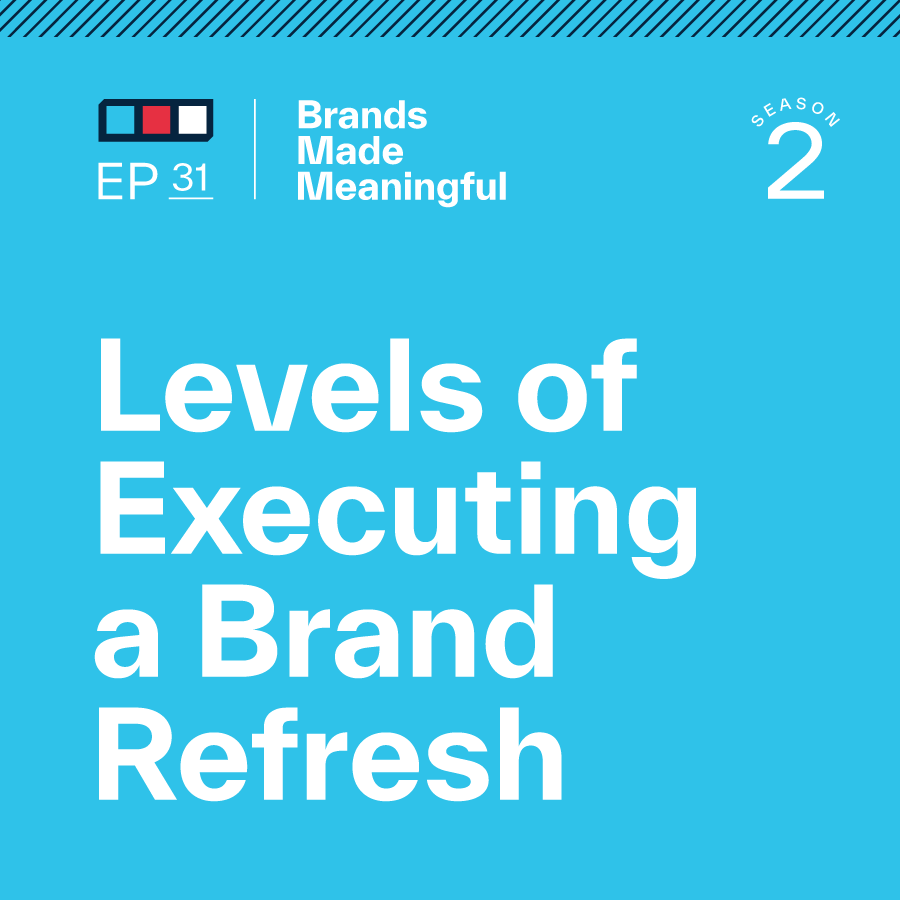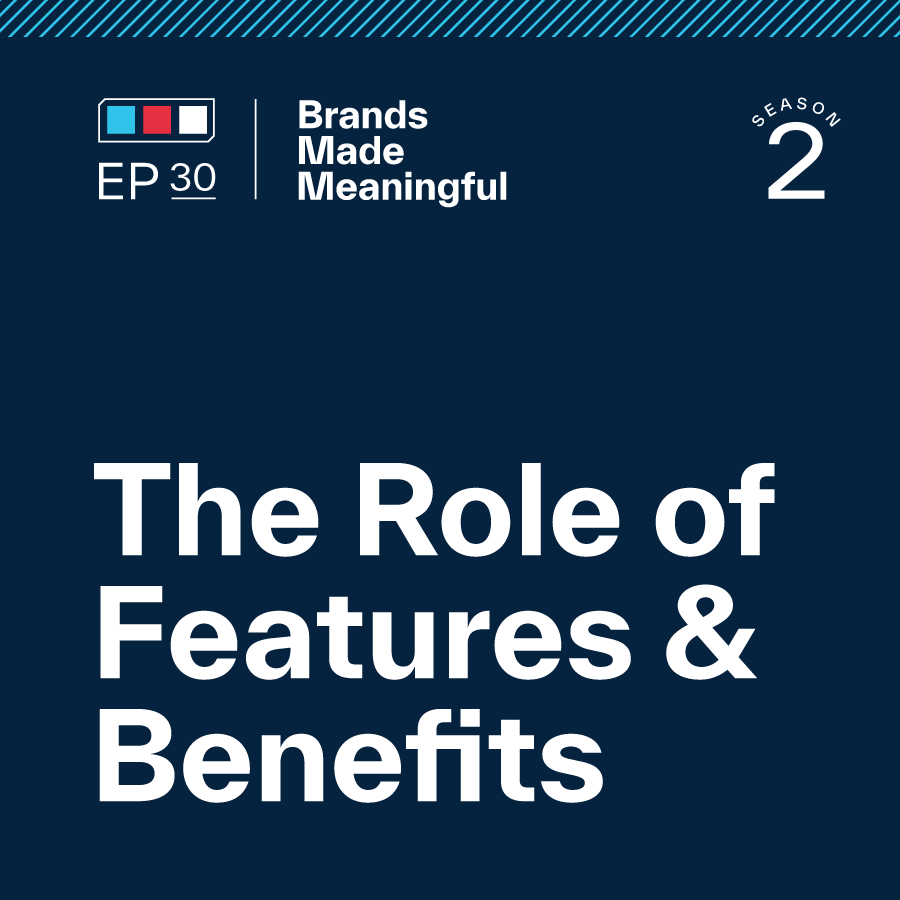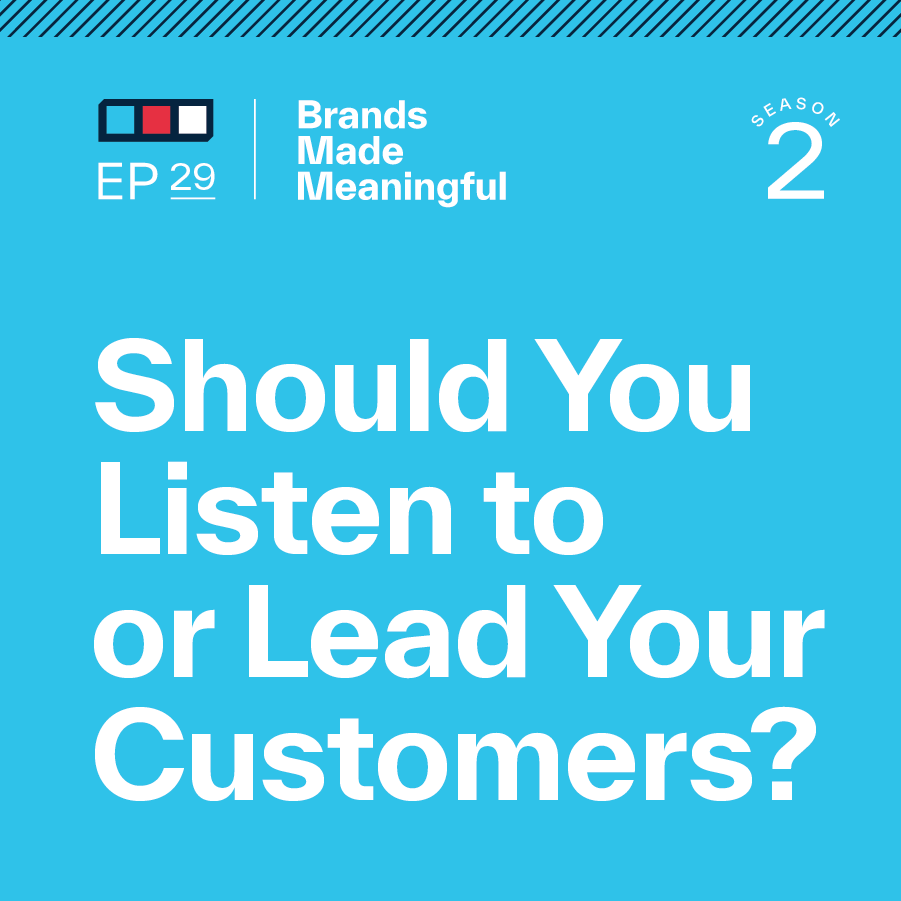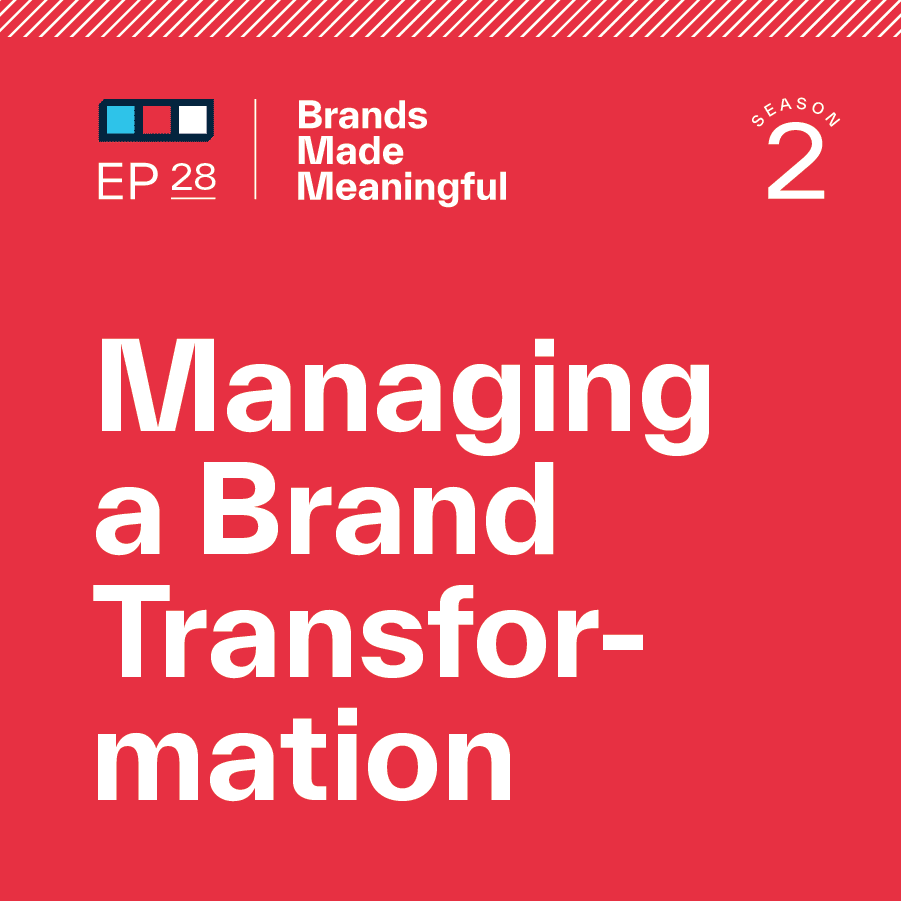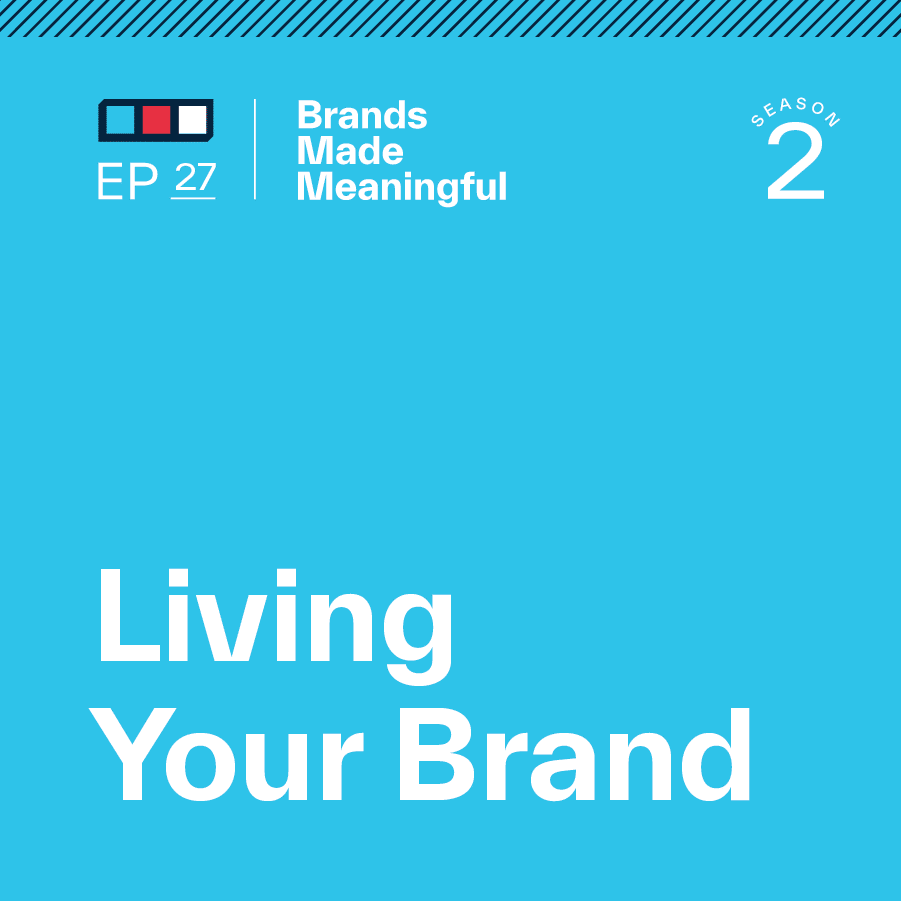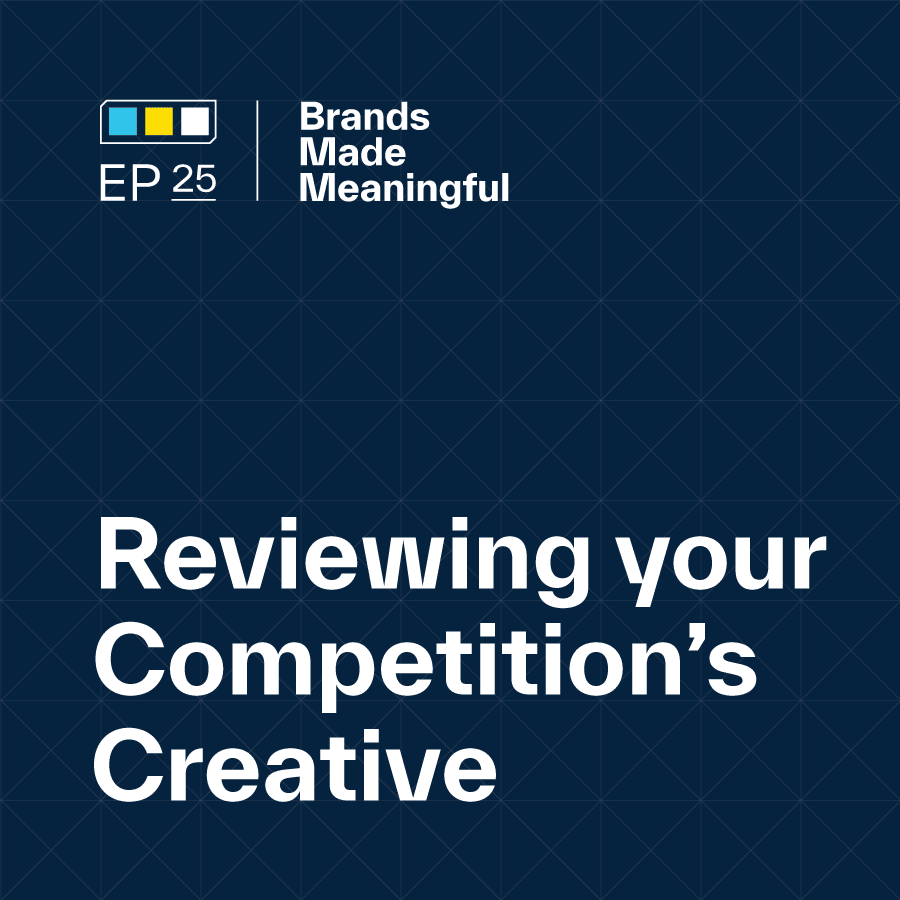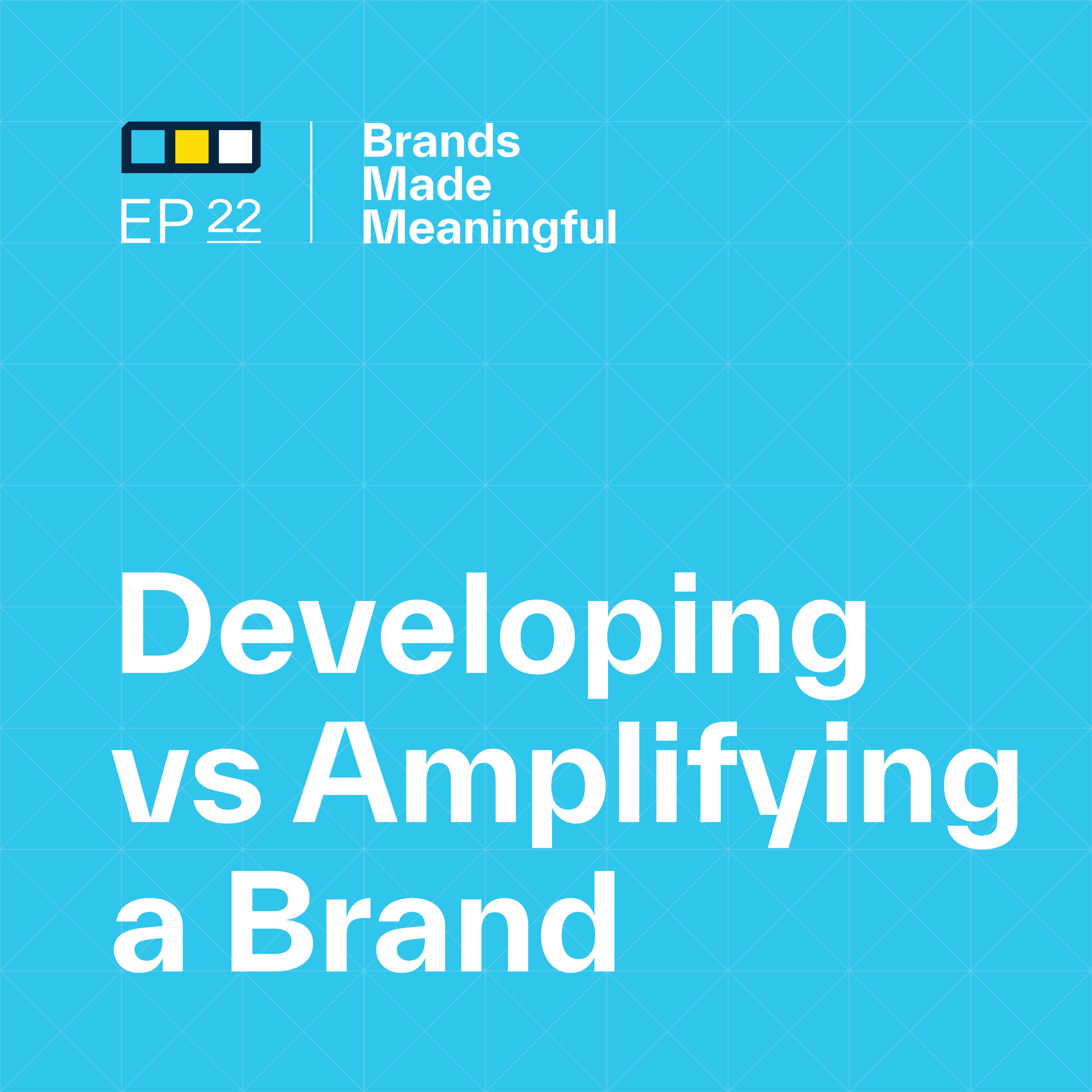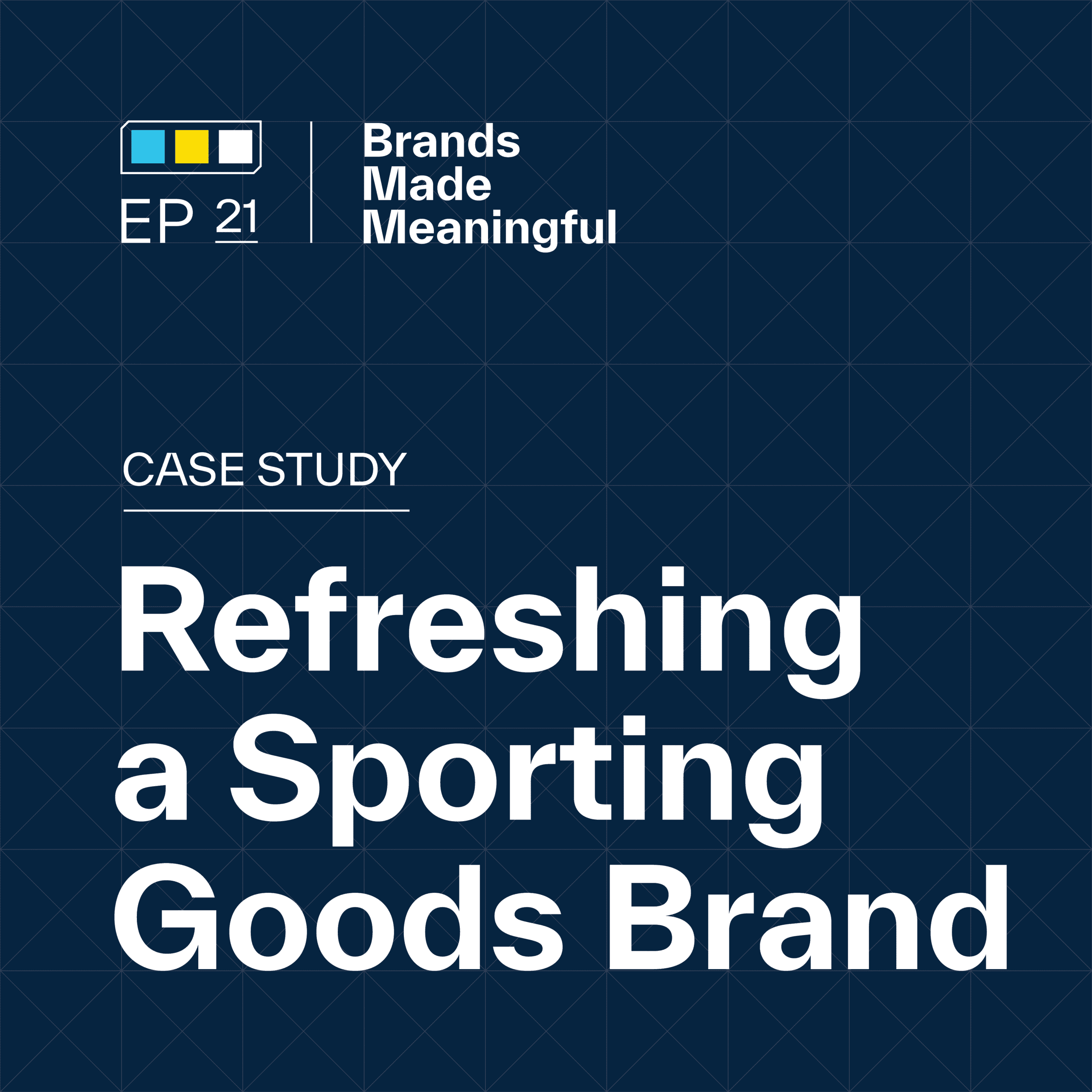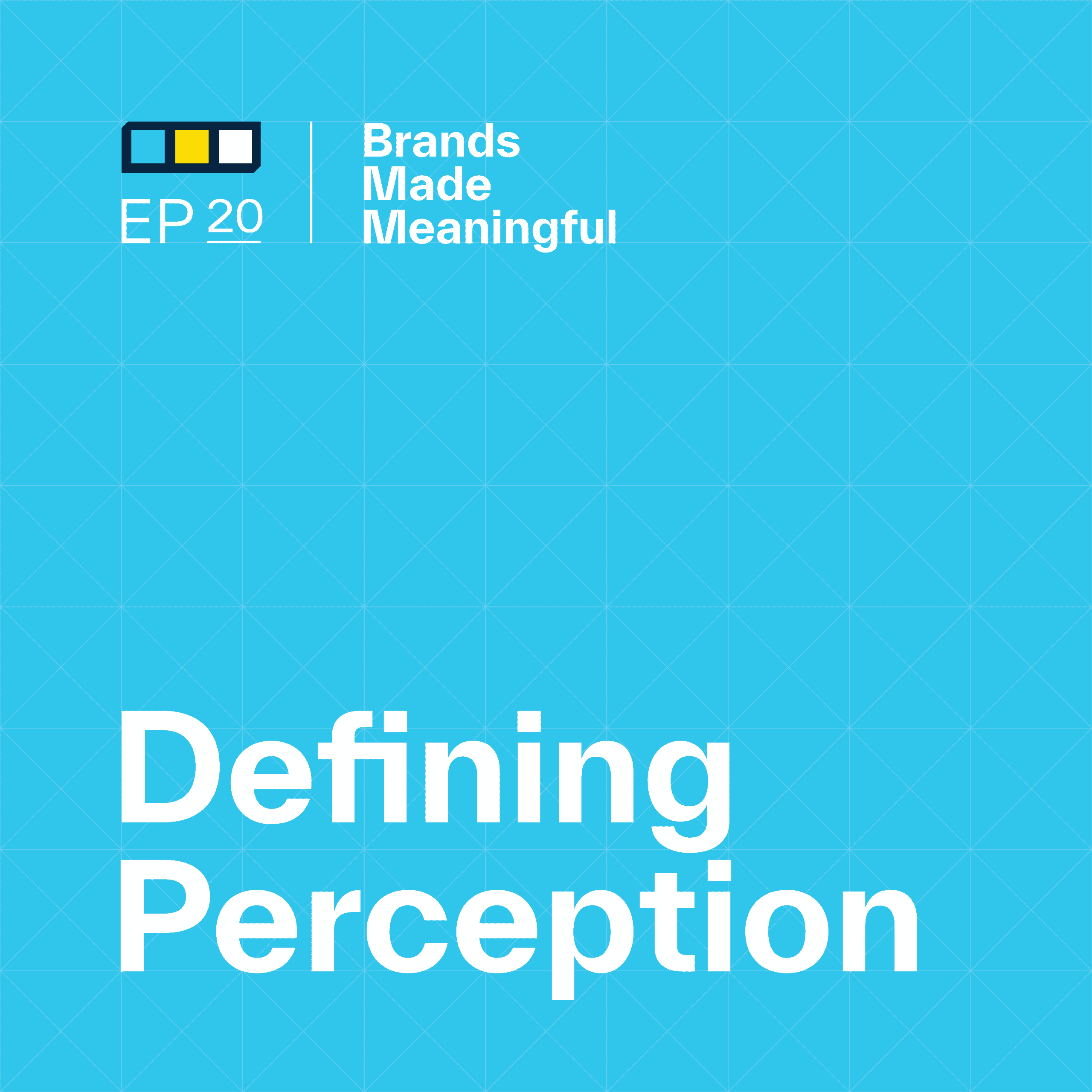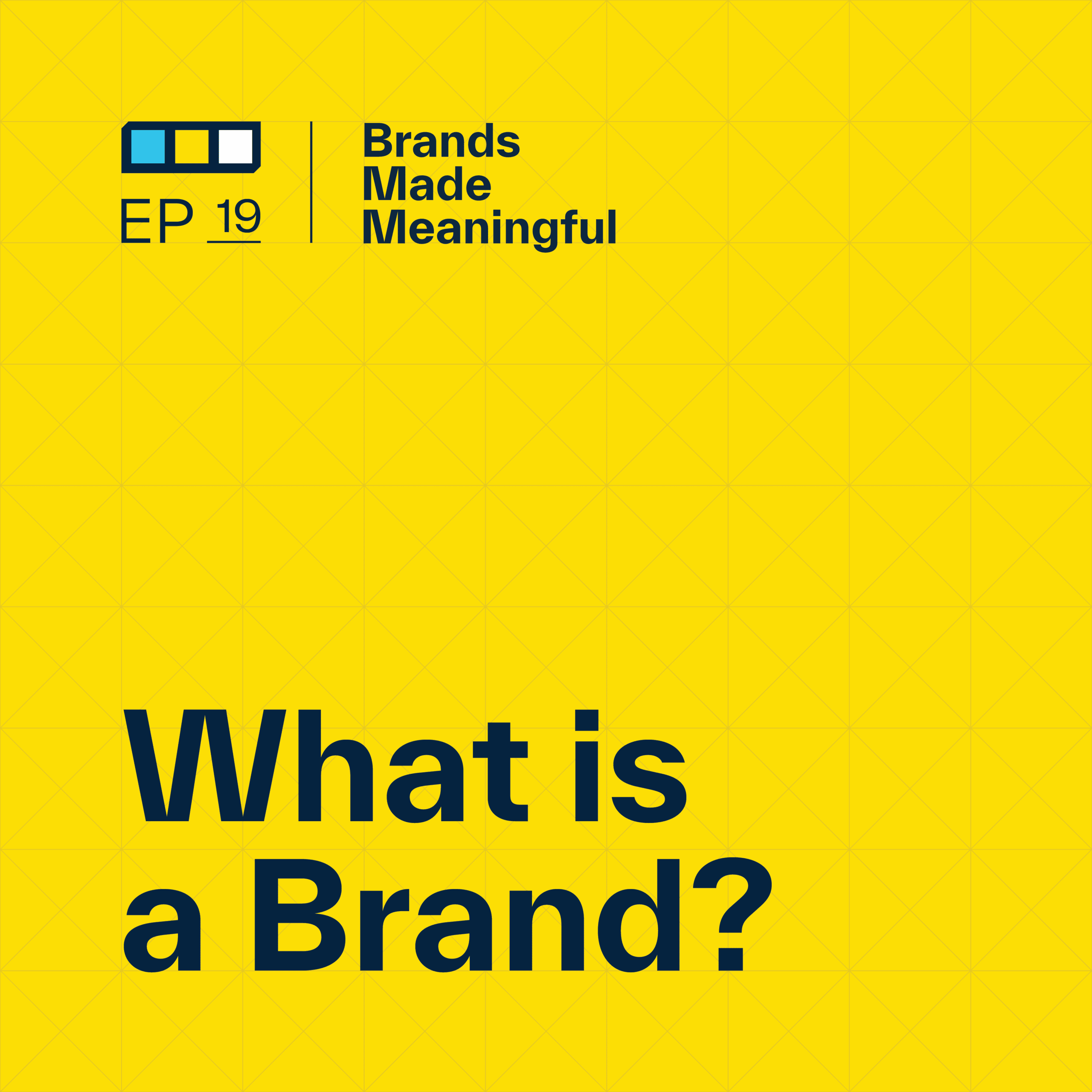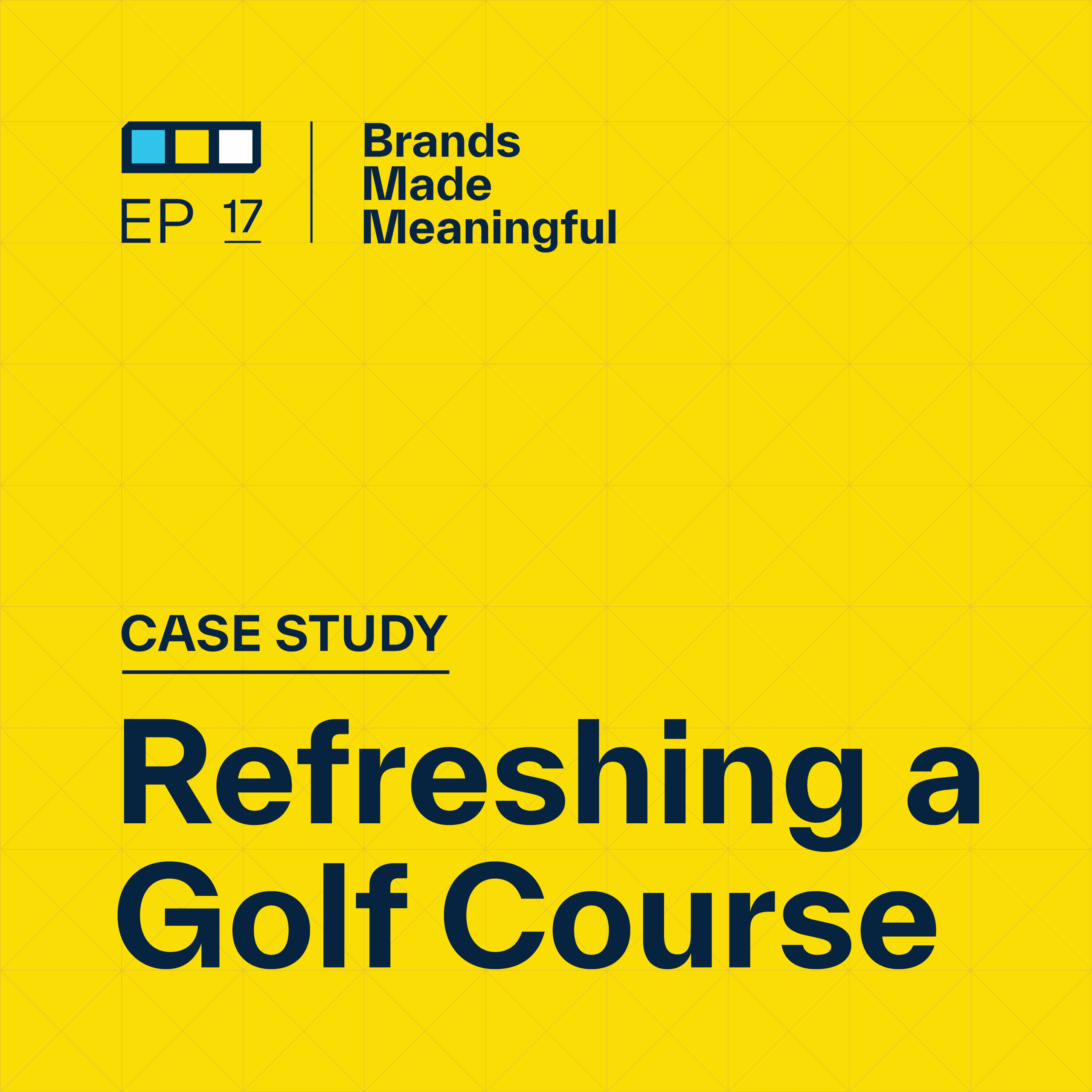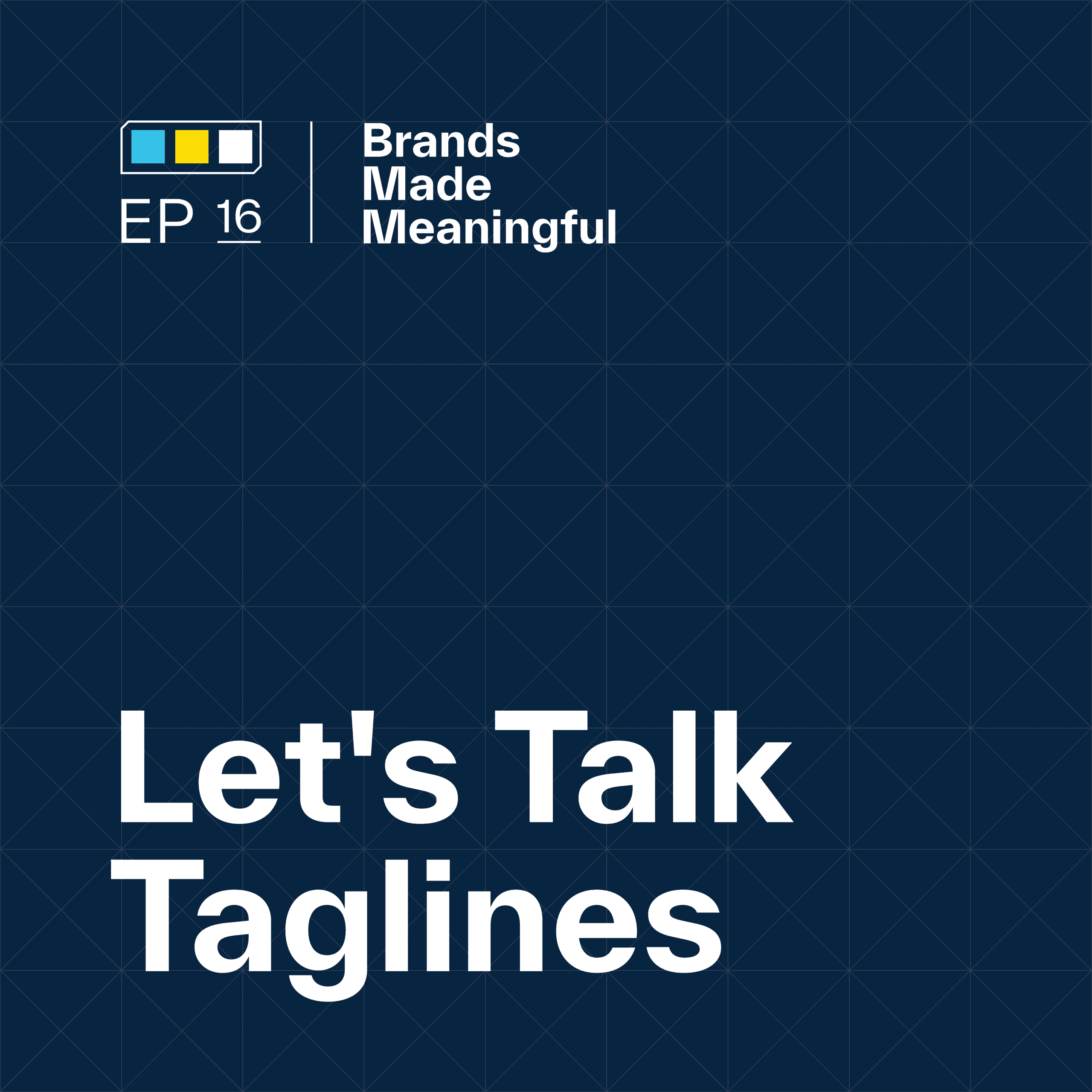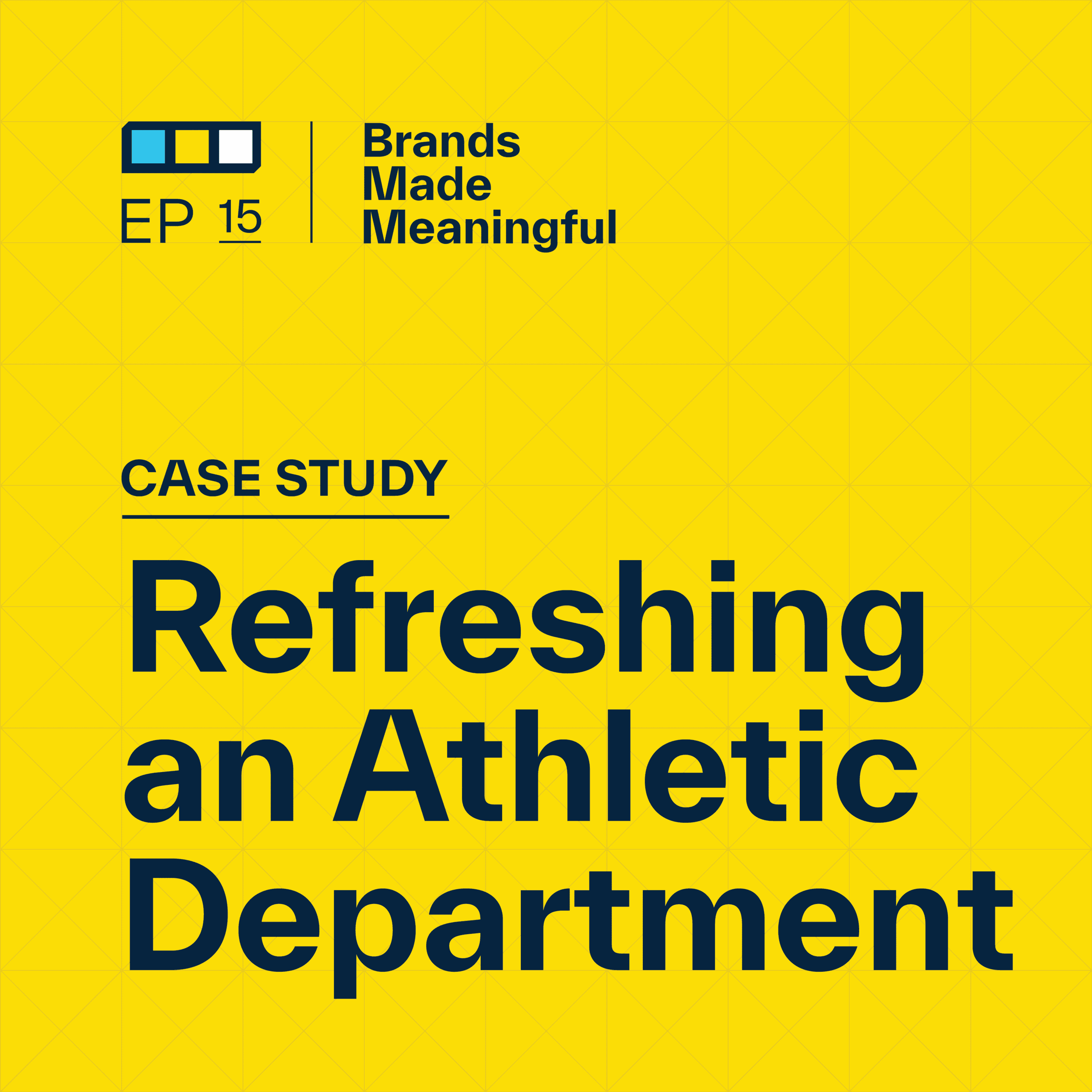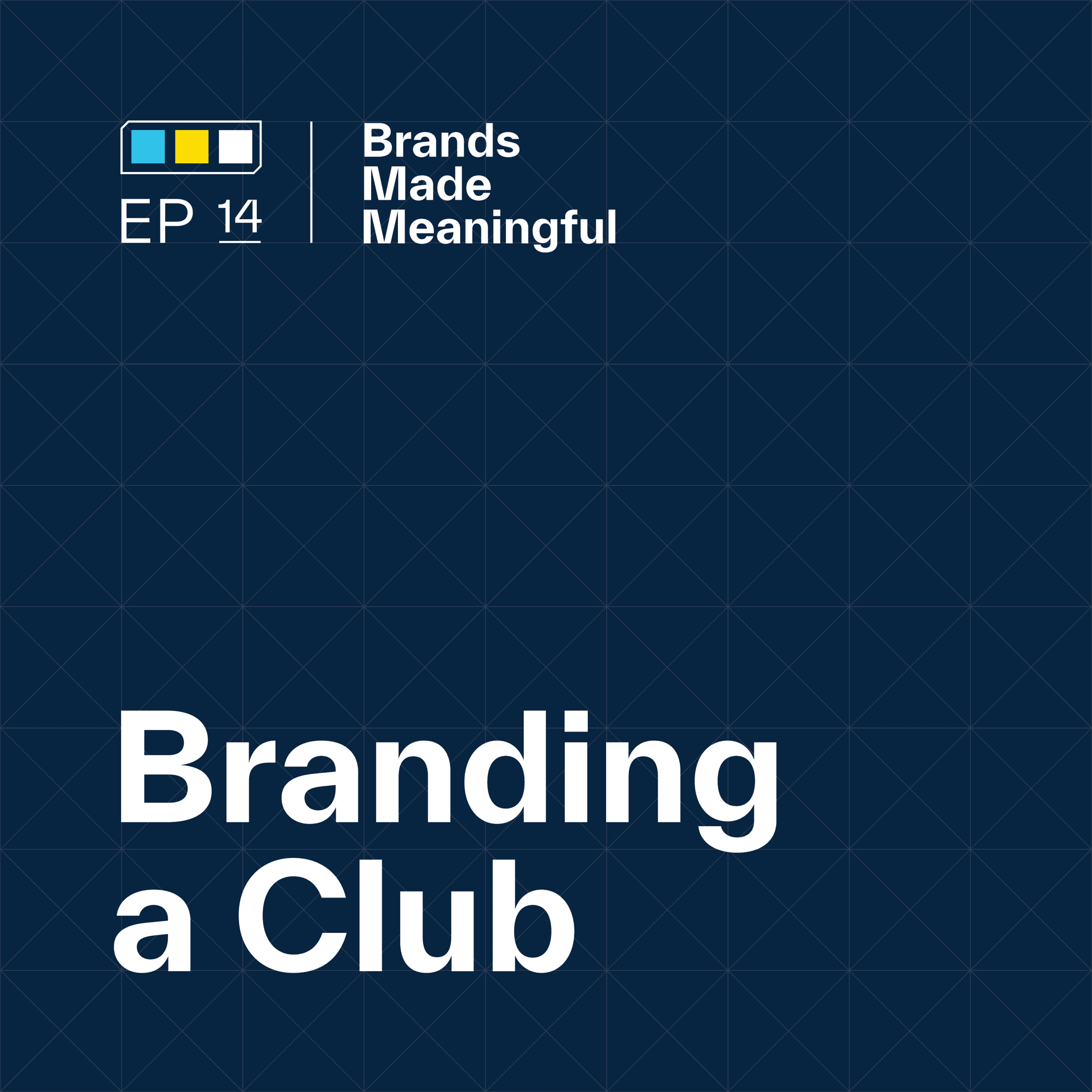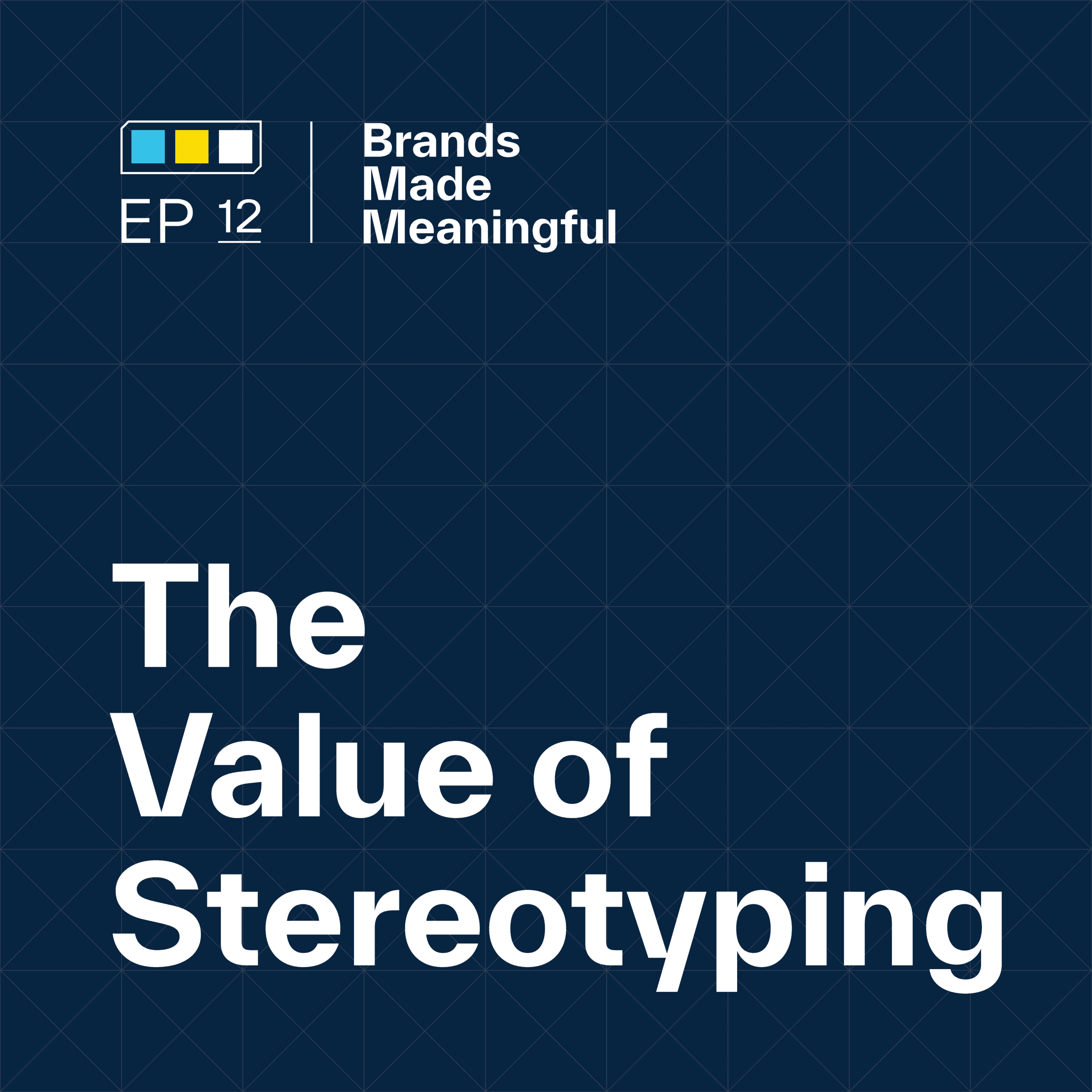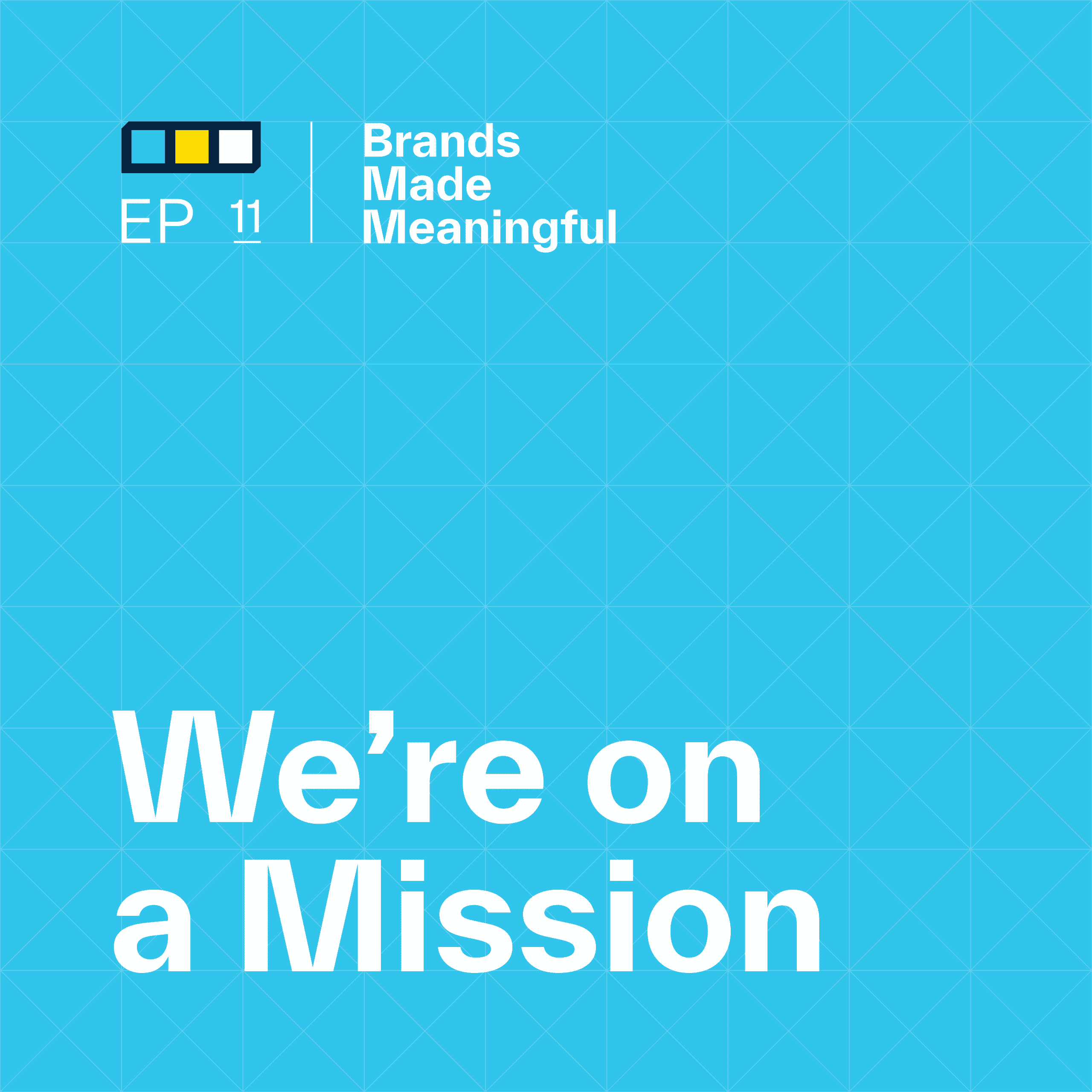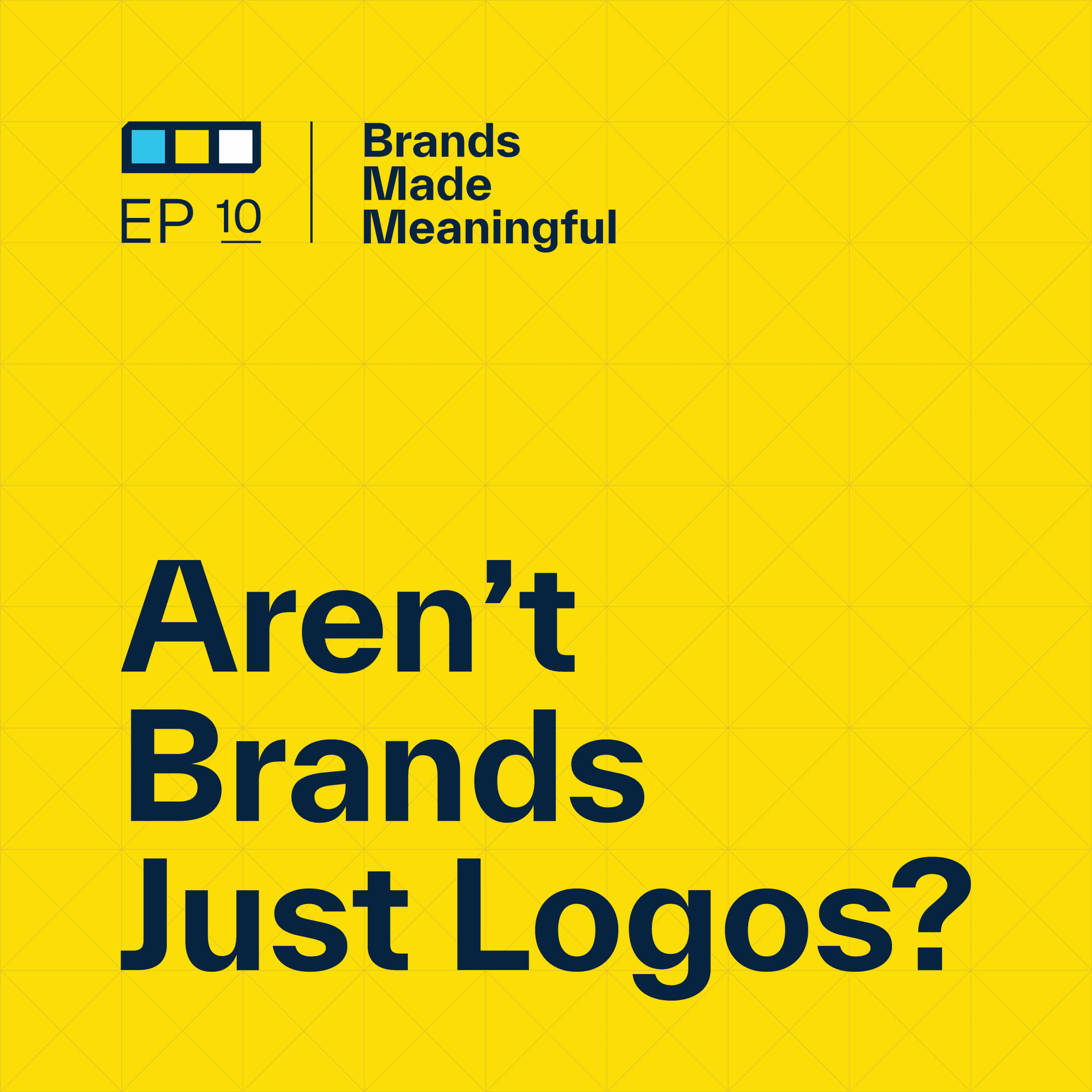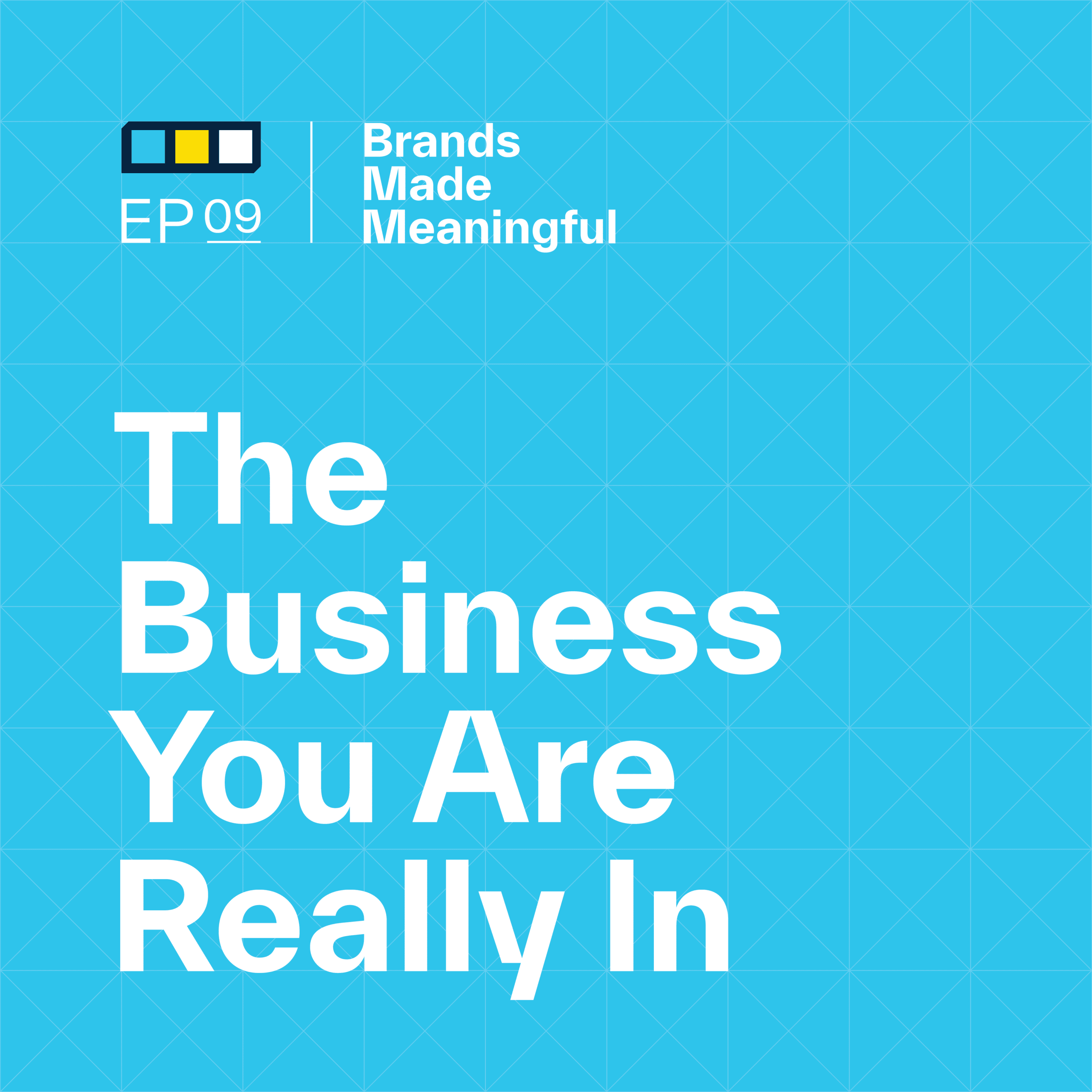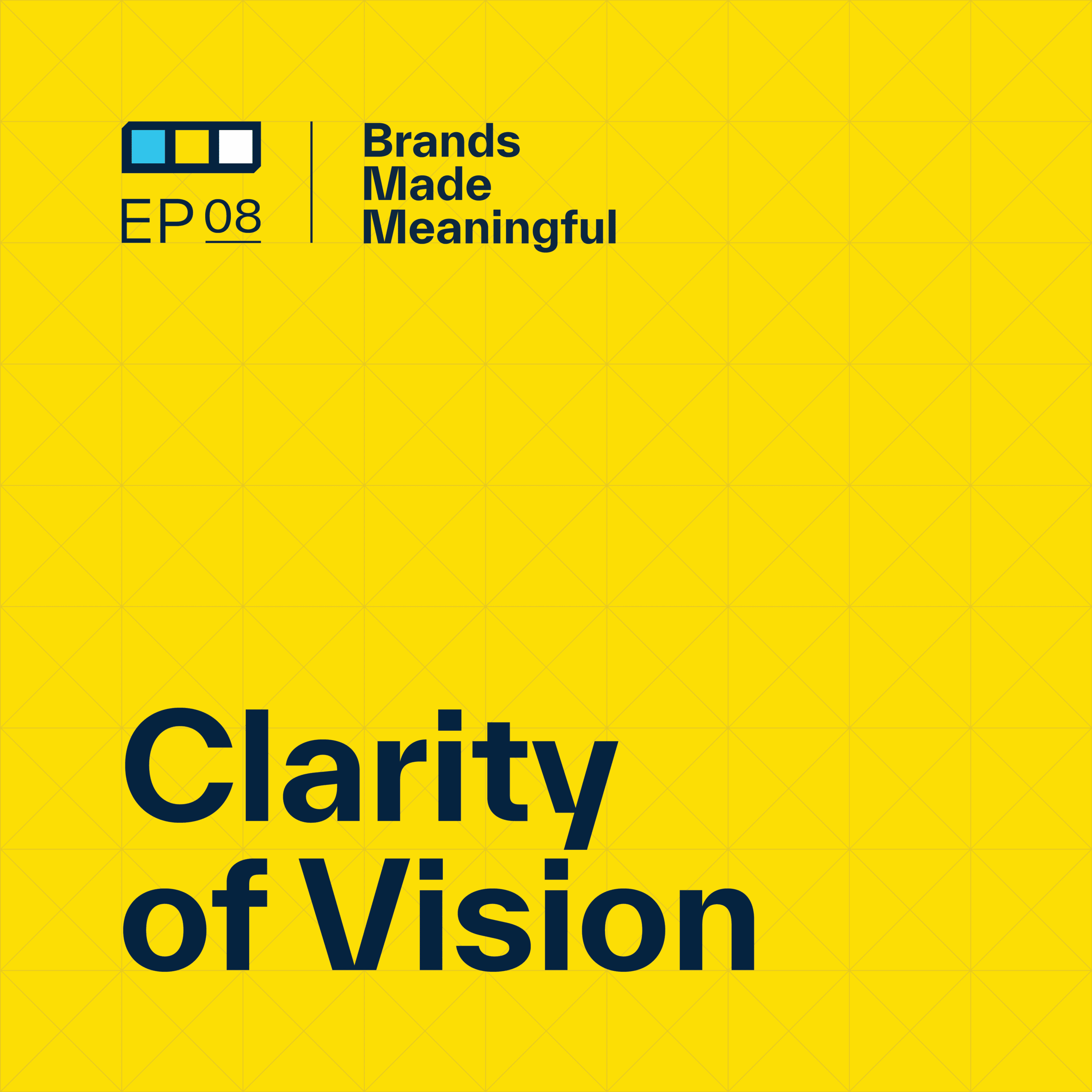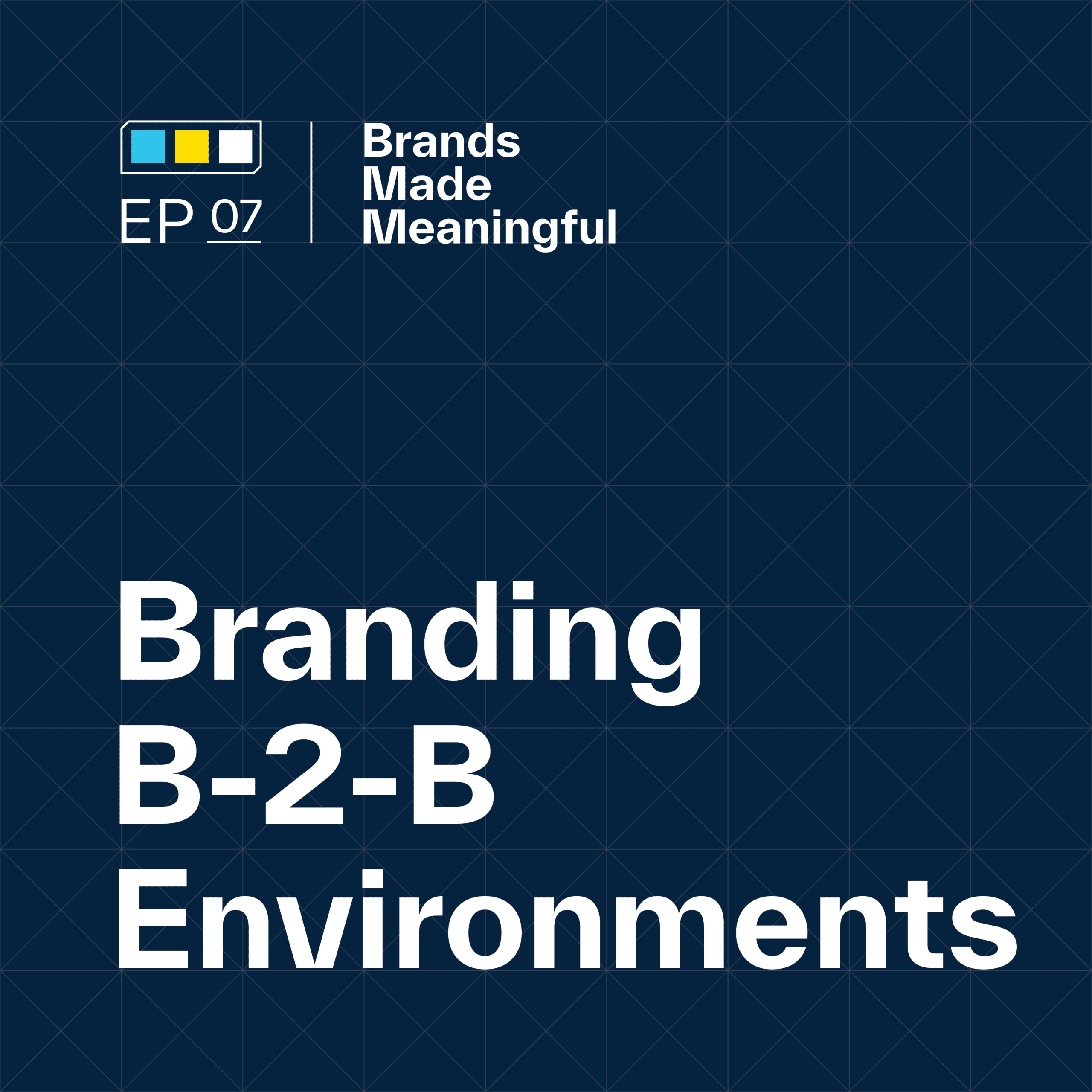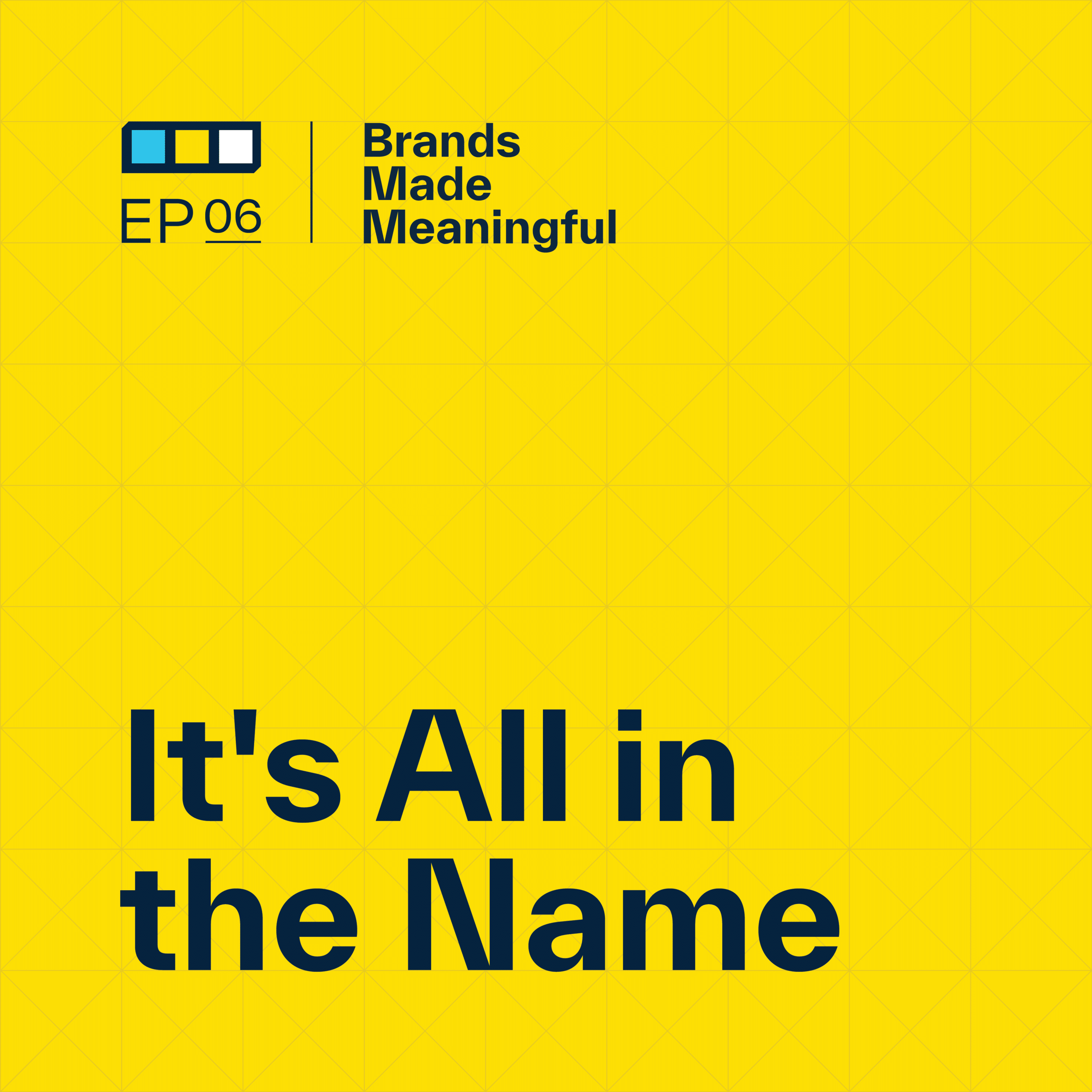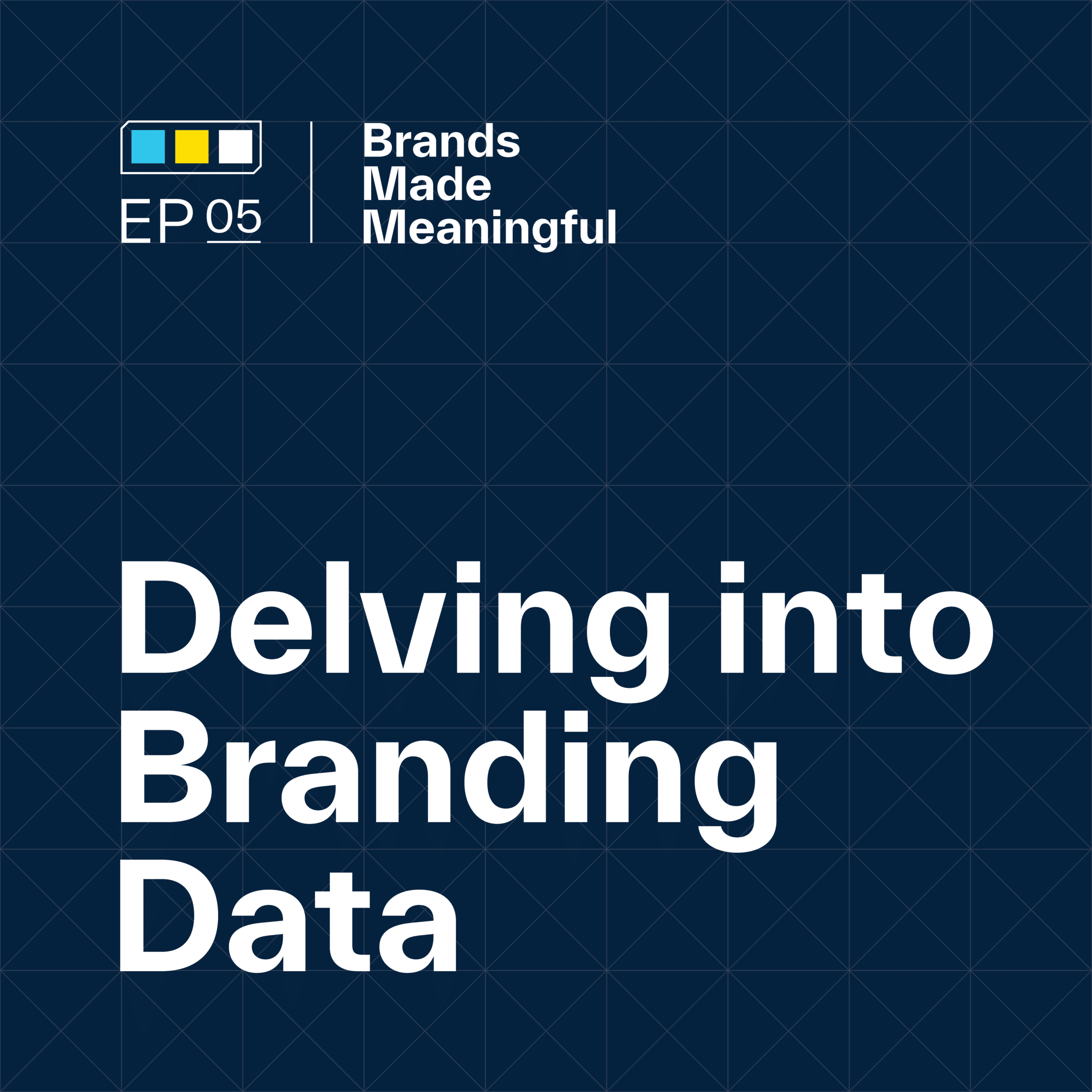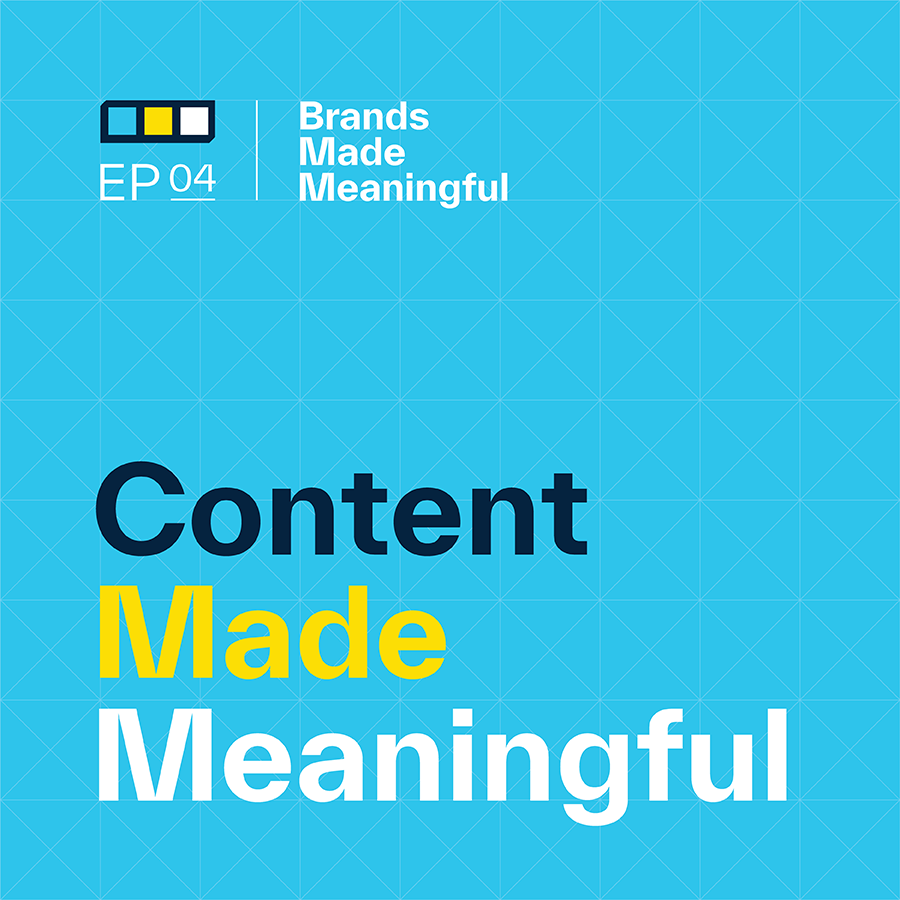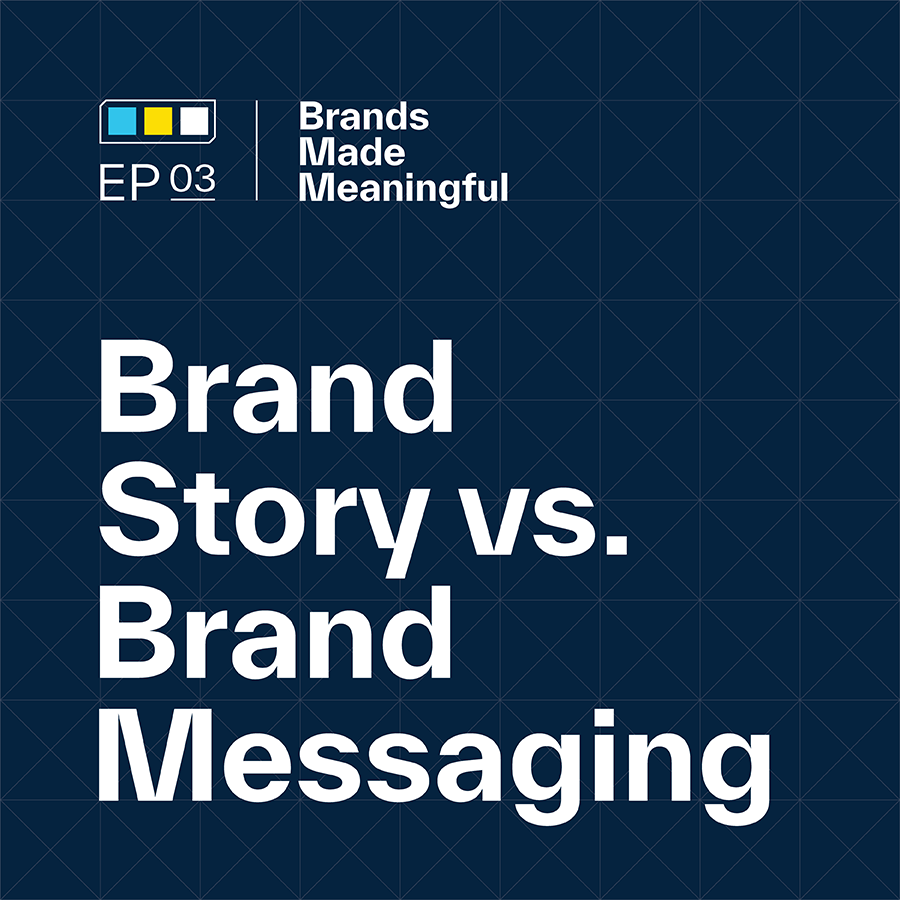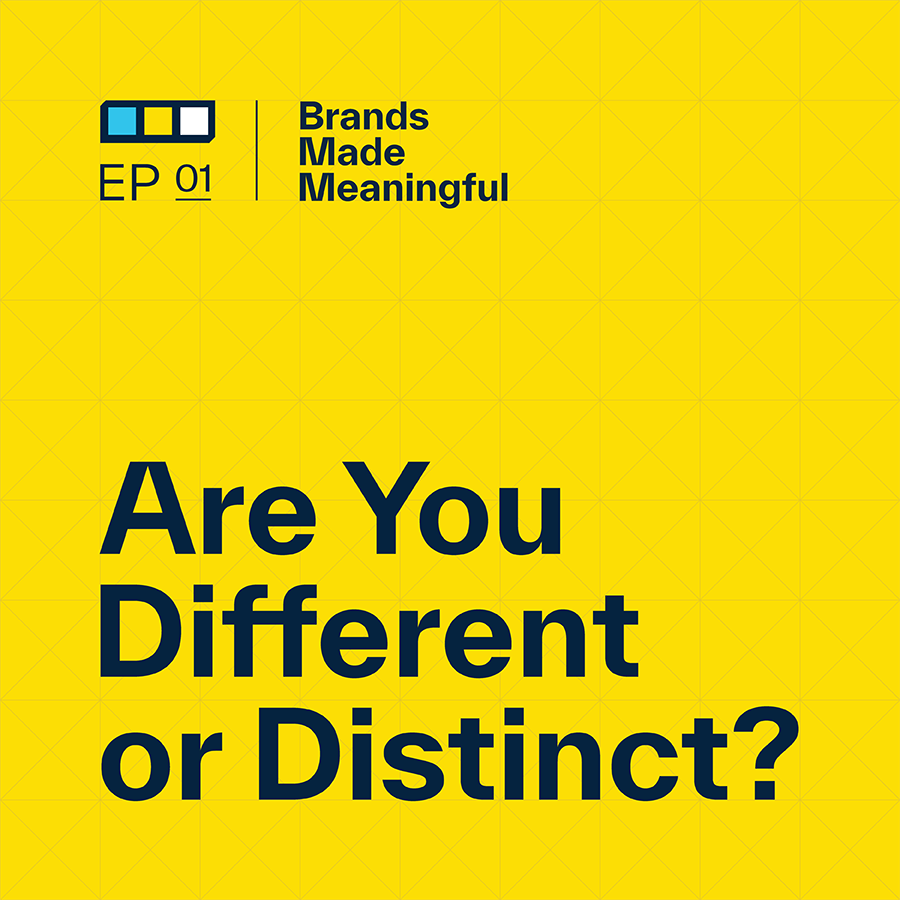EPISODE 23
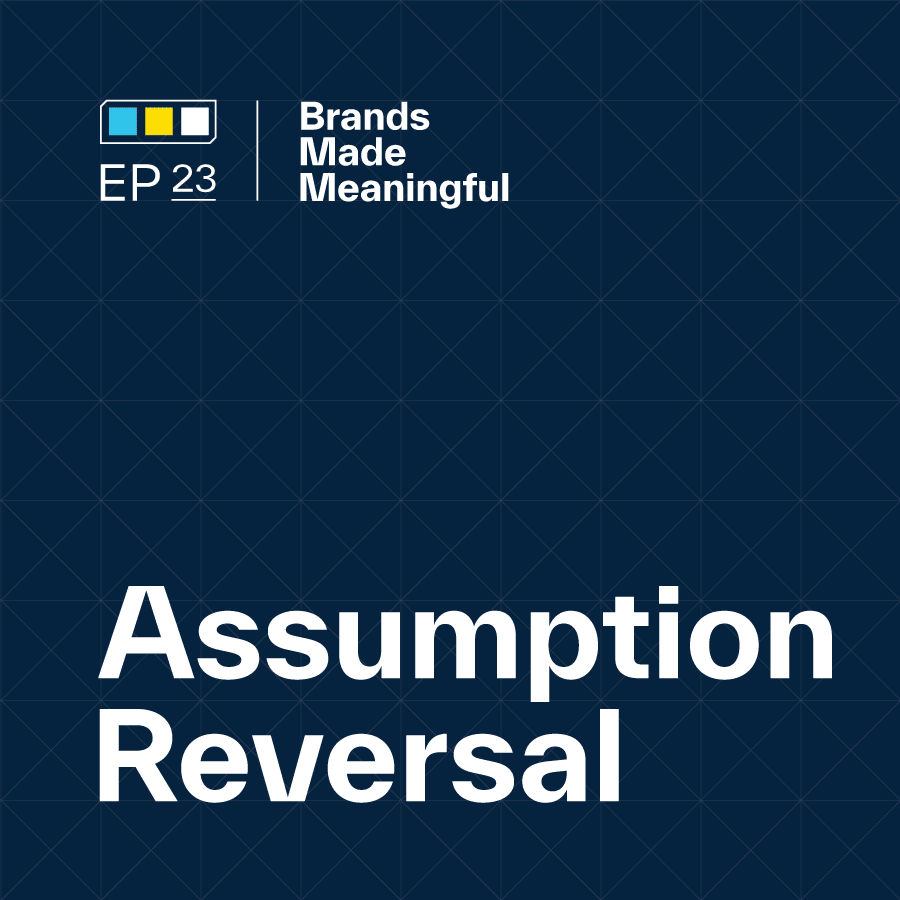
Assumption Reversal
Episode 23
Derek and Tucker discuss how we change our thoughts and get into a different mindset to refine and revise our branding.
EPISODE TRANSCRIPTION
Today it’s all about reversing assumptions.
Tucker It’s all about how we get our minds into a different space, how we change our thought process.
Derek This one hits close to home because we’re in the process of refining and revising some of our own stuff, some of our own brand work, which we’re always revising and refining, but some of our own positioning.
Expand Full Transcript
Derek And I find that we get so close to the topic at hand or to the issue at hand, and this might not even be anything creative, it’s just we’re trying to solve something and we’re trying to work through something internally as a team. And sometimes we find ourselves beating our heads against the wall or getting stuck in the minutia of a word or language or something that’s preventing us from getting to a solution.
Tucker I think we have clients too when we come up with solutions, someone goes, How did you get there? Here’s one exercise we do to get there wherever there is. And we call it the assumption reversal. This is something Derek and I learned in level C brand workshop courses that we take. Fantastic. Go check them out if you haven’t. And this is a big part of just thinking different, trying to get things on a different page and change your mind. I call this the eye roll exercise because a lot of answers come back and they go, Really? Really, you’re going to say that? And you’ll see why in a second. But how would you just walk through what it is that we’re going to do? It’s an exercise and do the step-by-step.
Derek So thinking about if you and your team are approaching something, let’s make it tangible. Let’s say you’re brainstorming, rewriting your brand’s tagline and you’re talking about the words that describe what you do and you’re thinking about all the various ways to say that and how that sounds and phonetics, is it trademarkable, and how does it sound next to your company name, and you get stuck. If you get stuck, the assumption reversal exercise is something to consider giving a try with your team. So the way that we look at it is four or five steps. The idea first is to just get out of your system all the basic assumptions, all the first things that come to mind. Write them all down.
Tucker So if we’re talking about taglines, it’s everything good or bad. I find that the worse, the more corny stuff that you put down on the page, the better it turns out to be. The most obvious stuff – put it on the page. If you sell printing services and you say, Well, people want printing. That’s pretty obvious. Put it on the page. We’re going to reverse that assumption real quick. So just every single thing that you could possibly do. So if the first step is to put down every assumption you could possibly think of, how long do we give people for that?
Derek I like to go 10 minutes. 10 minutes on your own without distraction – write them down, whiteboard them if you can, throw them on sticky notes is even better because we can put them up on a whiteboard together – and then come together and look at all these baseline kind of boilerplate, typical assumptions, all the first things that come to mind, the obvious stuff.
Tucker 10 minutes probably – I’ve got smoke coming out of my ears at like 5 minutes – but that’s okay because you want to get all of the stuff. I think the longer you sit there, the more obvious you get. And that’s why I call it the eye roll exercises, because you say things like, People want to save money. Well, yeah, maybe just put it on there. So then once we have all those things, we come together as a team. The second step is to really write them all down, make sure we have everything and it shouldn’t take very long, but then just flip the opposite, right?
Derek So if you’re a printing company, what if the tagline doesn’t say printing it? It’s the what-ifs. Why not? How else could we do this? What’s the opposite? What’s the assumption? What’s the reversal of the assumption that you just stated? If your brand color is, I don’t know, red and you’re thinking about how to execute something, the first assumption was that, well, this should be red. Well, what’s the opposite of red? Is it no color, white? Is it that we’re not telling a color story?
Tucker So if we have all of those assumptions on a page and then we flip them and we have all of these other ideas, normally in that you get an Ooh, that’s kind of interesting. If you don’t get there yet, it’s not a problem. So flip all your assumptions and then start picking the ones you like. We go through each of them, right? And we say, What do you think about this one? Do you like it? Do you not like it? Why doesn’t it work and why is it great? So if we do that for all of them, we normally start shaking out some of the ones that’s like, Well, that’s an assumption reversal, but it doesn’t make sense because of this. But we normally start with why is it great so that you have all these positives in there and then you can come back and say, why is it not going to work?
Derek And there’s actually another exercise that we do that follows through on that. It’s called the six hats. So we can talk about that another time. So then finally it’s picking the one or the two or the three that really start to stand out, maybe even not on their own. But there are nuggets of ideas that start to inspire you that then take your team to that place where you can start to select the best ideas that would stand out, that would be maybe disruptive.
Tucker And then you add them together, normally.
Derek So let’s talk about a real customer that we’re working with where we’ve done this. I can think of two ways that we’ve currently done this with them. The organization is called Enerchange. They are a nonprofit that we’ve worked with for about a dozen years and we’re currently in a brand refresh update process. By the time this comes out, it’s possible that the new website might even be live.
Tucker Should be done.
Derek So what we started with was the story. The story of Enerchange is an organization that comes into nonprofit facilities and helps them find ways to be more energy efficient so that they save money. And I think their current tagline right now might be Save Energy, Save Money.
Tucker It is. And they’ve really honed in on that. That’s what all of their marketing really is about. It’s about saving money. It’s not really even about saving energy to some portion. It’s really honed in on that end goal of saving money.
Derek It’s about saving energy because this organization was founded and rooted in a mission that was about being environmentally responsible and doing the best that they could with the services that they provide to reduce carbon footprints and to be good stewards of the environment.
Tucker But that doesn’t really have any place in their day-to-day communications. So their promotions, their emails, their newsletters, all that stuff, it really hones in on saving energy, but save really money. That’s what we’re really worried about.
Derek And the reason that they were interested in a brand refresh was because that story’s not resonating with people.
Tucker Not anymore. When you tell the story of features and benefits, and we can have a whole conversation on features and benefits, but when you tell that story for so long, your long-term customers start losing the desire to keep moving forward with those features and benefits.
Derek We talked about some of the challenges they were running into with the story of save money. Literally for somebody to engage and/or change to come into your organization and to do an assessment, it’s probably free to you based on the way that Enerchange as an organization is set up, and it’s incredibly an easy process to do. So we say, Well, why aren’t more people doing it? Why do you keep running into these walls? And they keep saying, Well, it’s too good to be true. That’s the response we get. That it’s too good. All you got to do is sign this and show us this and we’ll literally save you a couple of hundred dollars a month instantly. But it’s too good to be true. So the story’s not working.
Tucker So if we’ve identified the story’s not working and with Enerchange saying, We’ll save money, save energy, and they’ve determined that, Well, maybe we’re just tired, maybe our message is a little tired, maybe our brand’s a little tired. How do we move forward? I think that the very first step that we’re talking about right now is the assumption reversal. How do we reverse that assumption? Where do we start? And where we started was, Well, what if nobody cares about saving money? Not to say they don’t. But say what if. What if they didn’t care about saving money or saving energy at all? What would we say?
Derek What if nobody cared at all about saving the environment? Now that’s a terrible thing to say because, of course, we all care about the environment. But let’s just turn this on its head and see what happens.
Tucker And from there, we started flipping the reverse or flipping the assumption to then say, So if no one cares about money, maybe they have all the money in the world and they’re like money means nothing to me. Why are you talking about it? What would we say? And we came down the realm, and this also comes out of another way we can look at it, but we really come out and say, Well, maybe features and benefits aren’t going to work anymore. And what about outcomes? What kind of outcomes can we communicate that someone would care about?
Derek And that was the goal. The golden sort of nugget with this specific assumption reversal is, of course, these businesses care about money. But just posing that question, If they don’t care about saving money and they don’t care about their energy bill, then what do they care about? And that led to an inspired conversation with our team and we started the process by writing down all the assumptions about what saving money does, and what that means to them. And in that flip, we ended up coming up with a story that actually doesn’t have the words save money or save energy. It’s not part of the story at all anymore.
Tucker No, not at all. And if you go to their website, Enerchange.org, you might see what that new story is, and it really has nothing to do with money. It has way more to do with opportunity and all the things after. And we can have a whole other conversation about that rebrand. But I think another example of this is with a company called Game One. We rebranded Game One and where the assumption reversal really came into play for our team internally was all about the color. We looked at colors and they are in the team sport space. They deal with team sport colors all the time. What color should we be? What color should we be? We had many conversations about this. And the assumption reversal is, Well, maybe we’re no color. And that was a light bulb. That was, Oh, my gosh, maybe we don’t have a color. Why wouldn’t we have a color? And it becomes a different conversation. But just having the initial meeting, and sometimes these meetings take longer than you would want them to take, but it’s putting everything on the table as opportunities to change. And that’s really the gold standard with this assumption reversal exercise.
Derek Back to Enerchange. We use the same process in logo design work. We literally got a whiteboard out and said, All right, what are our assumptions when it comes to Enerchange? And, of course, we’ve got a decade of history of working with this organization. What do we know? What visuals, images, icons, symbols come to mind when we think of energy, saving money, and the work that Enerchange does? We literally filled a whiteboard. And then it was the pause and step back and say, Okay, now what are the opposites of this? Now this was a creative project, but out of those conversations we didn’t necessarily say, Oh, the new logo is going to be this right here. But there were three or four very specific nuggets of information and insights that came out of that conversation that directly led to the mark that we’re now refining right now.
Tucker It’s very interesting to be in those conversations.
Derek It seems simple.
Tucker I know it does. And we’re talking about it right now. In my mind, I’m going, Well, yeah.
Derek We just did it for Carbone’s Pizza.
Tucker They had an opportunity to wrap a huge metro transit in downtown Minneapolis. A huge Metro transit thing is like, How do you do that? What do we do? Do we talk about pizza? Do we talk about this? Do we talk about that? And so for us, it was really flipping that on the edge and going, Well, maybe nobody cares about pizza. Maybe no one’s hungry ever again. Maybe none of this exists. Maybe Carbone’s doesn’t. Even if you didn’t know who Carbone’s is, it’s a pizza place in Minneapolis.
Derek Pizza places. 85 of them.
Tucker And for us, that was super helpful to then come back to them with fresh ideas. And I know a lot of our clients rely on us to just think about things differently, to say, I have a project, what should we do? Our answer shouldn’t be obvious every time. It should be multiple different opportunities for them to think differently about how they’re utilizing that medium.
Derek Like I said, maybe today’s a shorter conversation than some. But because we use this exercise and we found it extremely helpful not only for the companies when we’re working on their projects, but also for ourselves at the idea of sharing this exercise, which again seems like common sense, but sometimes we just take it for granted or we forget that step and next thing you know, you’re stuck and spinning on something without having the clarity of what you could do to get you back on track and wanted to share that. This is a super helpful one.
Tucker And a good tip for doing this exercise is don’t be too serious, don’t overthink it. And then what they talk about in level c all the time is, get funky, go do something, feel like it’s a really dumb idea and that’s okay. Just keep moving forward. As long as you’re a little uncomfortable, you should be in a good place.
Derek That’s how we get to being disruptive, how to find whatever the solution is that stands out, that’s hopefully distinctive, differentiated, and gets you to think about things in a brand new way. It’s a really great way to stretch that gray matter muscle.
Tucker The gray matter muscle. All right.
Derek That’s it. So until next time, if there’s something you’re stuck on and you would like some conversation from our side about how we overcome some of those issues, some of those ways of thinking, some of those approaches, let us know. We’d be happy to add it to the queue.
Tucker Reach out, people. Reach out.
Derek Thanks. I’ll talk to you next week. Sussner is a branding firm specializing in helping companies make a meaningful mark, guiding marketing leaders who are working to make their brand communicate better, stand out and engage audiences to grow their business. For more on Sussner, visit Sussner.com.
More Episodes Like This
Building Brand GuidelinesEpisode 65
Derek and Tucker show us how to build infrastructure guidelines to unify your brand experience across the board.
Club Identity SystemsEpisode 64
Derek and Tucker cover what Identity Systems entail and how to discern between internal and external methodologies.
Navigating Branding With a BoardEpisode 63
Derek and Tucker bring clarity to uniting your company under one cohesive vision.
Putting a Committee TogetherEpisode 62
Derek and Tucker assemble your need-to-know facts when putting together your committee.
The Guiding Principles of Private ClubsEpisode 61
Derek and Tucker go over the top ways private clubs can find the balance between pleasing old members while attracting new ones, all while making moves towards the future.
How Color Affects PerceptionEpisode 60
Derek and Tucker cover how to best convey your business with color.
Brand EcosystemsEpisode 59
Derek and Tucker break down how to craft effortless experiences when considering your brand as a whole.
6 Types of Brand TransformationEpisode 58
Derek and Tucker dive into 6 distinct types of transformations for a wide range of brands.
Tournament Branding For ClubsEpisode 57
Derek and Tucker discuss designing and delighting your club members with tailored events.
Brand Promoters & DetractorsEpisode 56
Derek and Tucker discuss how high level promoters increase your NPS and how to turn the tides on your detractors.
The Loudest Voices in the RoomEpisode 55
Derek and Tucker talk about gathering feedback while prioritizing every voice.
Determining A Primary AudienceEpisode 54
Derek and Tucker discuss if and when you should be honing in on your audience vs. casting as wide a net as possible.
Branding For ExclusivityEpisode 53
Derek and Tucker discuss the intricate process of naming your brand.
Measuring Brand SuccessEpisode 52
Derek and Tucker discuss how we measure our success in branding and a few key KPIs that help us understand our impact.
Branding For ExclusivityEpisode 51
Derek and Tucker breakdown how brands can create the perception that they are exclusive and only for a certain type of consumer.
What Makes A Brand SurprisingEpisode 50
Derek and Tucker break down the Sussner formula that we believe leads to a surprising brand.
Breathe Life Into Brand TraditionEpisode 49
Derek and Tucker discuss the intricacies and common pitfalls of branding for Private Golf Clubs.
They Key of Visual DifferentiationEpisode 48
Derek and Tucker break down the importance of differentiating your brand on a visual level.
Branding For Private GolfEpisode 47
Derek and Tucker discuss the intricacies and common pitfalls of branding for Private Golf Clubs.
Dealing With An Identity CrisisEpisode 46
Derek and Tucker breakdown how to identify and remedy a brand's identity crisis throughout thoughtful and intentional brand management.
Branding vs MarketingEpisode 45
Derek and Tucker discuss the differences between Branding and Marketing and how to make the two compliment each other.
Build Your Brand's FoundationEpisode 44
A brand's foundation is a critical element in being successful in the long-term.
Building a Constructive Branding ProcessEpisode 43
Derek and Tucker break down the steps required to build the most constructive and meaningful branding process.
What Makes a Brand Relevant?Episode 42
Relevance is a key piece of a brand's identity for creating clarity and connection.
Your Right to WinEpisode 41
Derek and Tucker discuss the “Right to Win” and the odds of your brand's success within your target market.
An Intro to Sub BrandingEpisode 40
Derek and Tucker discuss the nuances of developing sub-branding and strategies.
Conquer Branding FearsEpisode 39
Derek and Tucker dive into how to overcome the fear of change and the nature of constant refinement of your brand.
Balancing Strategy & DesignEpisode 38
Great strategy is a necessary foundation for great design—and great design brings great strategy to life.
Branding PrioritiesEpisode 37
Branding priorities are the actions and initiatives that shape or enhance a brand's identity, perception, and market position.
Invest in Your BrandEpisode 36
Investing in your brand benefits your company as a competitor in the marketplace, builds trust with customers, increases perception of quality, and drives employee engagement.
Why is Positioning Scary?Episode 35
Narrowing the brand's position is really a strategic decision to focus the brand's offerings, messaging and target audience on a specific niche or segment within the market.
What Are Brand Consultants?Episode 34
Derek and Tucker discuss the importance of hiring expertise with a wider breadth of knowledge than just visuals.
Hire for Brand FitEpisode 33
Hiring people that fit your brand is key in order to maintain brand authenticity, positive culture, and consistent messaging.
Your Brand’s Stance MattersEpisode 32
Your stance can help define your brand from a core level and make branding, hiring, and marketing not only easier, but more meaningful.
Levels of Executing a Brand RefreshEpisode 31
If you have a brand strategy in place, how do you execute it?
The Role of Features & BenefitsEpisode 30
Derek and Tucker discuss the importance of features and benefits within the context of branding, selling, and marketing your products and services.
Should You Listen To or Lead Your Customers?Episode 29
Within the challenge of any rebrand is the challenge of managing customers' perception of change.
Managing a Brand TransformationEpisode 28
Episode 28 discusses the highlights and challenges of rolling out a new brand, both internally and externally.
Living Your BrandEpisode 27
Your brand is not this shiny trophy on the shelf. It is something that you are molding every single day.
What Makes a Brand Authentic?Episode 26
Season 2 starts off with a discussion about building authentic brand experiences, both internally and externally.
Reviewing your Competition's CreativeEpisode 25
Derek and Tucker discuss the process of reviewing your competitors' creative strategy to better position your brand within the market.
Interviewing your Audience for InsightsEpisode 24
This episode details the process and benefits of interviewing your audience as part of the branding process.
Assumption ReversalEpisode 23
Derek and Tucker discuss how we change our thoughts and get into a different mindset to refine and revise our branding.
Developing vs. Amplifying a BrandEpisode 22
Another way to say it is, development is building and crafting your brand story, and amplification is then telling it.
Refreshing a Sporting Goods BrandEpisode 21
This episode shares the steps behind Sussner’s work in refining the Shock Doctor brand.
Defining PerceptionEpisode 20
Derek and Tucker discuss the positive and negative impacts of brand perception.
What is a Brand?Episode 19
Derek and Tucker discuss what defines a brand and what makes them successful.
Branding Golf Courses vs Golf ClubsEpisode 18
Derek and Tucker further hone in on golf course design.
Refreshing a Golf CourseEpisode 17
Derek and Tucker discuss the bar for golf course design – and how to push past it.
Let’s Talk Taglines Episode 16
Derek and Tucker talk taglines in today's episode.
Refreshing an Athletic DepartmentEpisode 15
Derek and Tucker sit down today to discuss what logos mean within branding.
Branding a Club Episode 14
Derek and Tucker discuss how to brainstorm branding a club.
An Intro to Internal Branding Episode 13
Derek and Tucker discuss the power behind internal branding.
The Value of Stereotyping Episode 12
Derek and Tucker sit down today to discuss the meaning of stereotyping within the branding world.
We’re on a Mission Episode 11
This episode digs into the rallying cry for the greatness your team is going to accomplish.
Aren’t Brands Just Logos? Episode 10
Derek and Tucker sit down today to discuss what logos mean within branding.
The Business You Are Really In Episode 09
Derek and Tucker sit down today to discuss how to discover what business you are really in to better understand your mission statement.
Clarity of Vision Episode 08
Derek and Tucker discuss the importance of looking ahead towards the big picture to better hone the purpose behind what we do in the now.
Branding B-2-B Environments Episode 07
Derek and Tucker discuss the Branding of Spaces.
It’s All in the Name Episode 06
Derek and Tucker discuss what a name can say - and not - about your company.
Delving Into Branding Data Episode 05
Derek and Tucker jump into the discovery phase of branding before it hits the drawing board.
Content Made Meaningful Episode 04
Today Derek and Tucker discuss the concepts within content and its common misconceptions such as the phrase "Content is King."
Brand Story vs. Brand Messaging Episode 03
Your story matters.
Visuals That Take The Cake Episode 02
Derek and Tucker sit down to discuss visual impact and what that could mean for your brand.
Are You Different or Distinct? Episode 01
It's not about being the only option, it's about being the right option. Join Derek and Tucker as they discuss Differentiation & Distinction.


